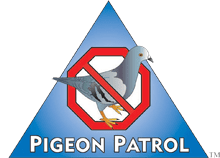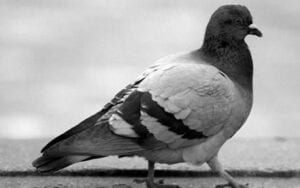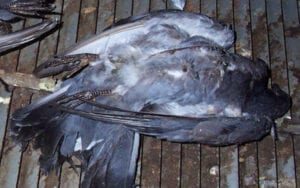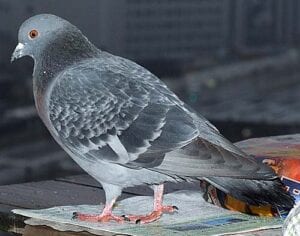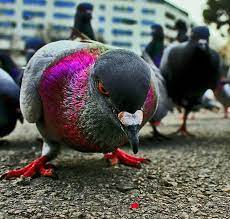
by Pigeon Patrol | May 31, 2021 | Bird Deterrent Products, Bird Law, Bird Netting, Bird Spikes, MBCA, pet bird, Pigeons, Pigeons in the News, Raccoons
Breakfast reporter Wilson Longhurst tried his best to report the unusual story of a pigeon arrested in India on suspicion of spying, but he couldn’t quite hold it together today.
The Times of India reports the bird was captured around the time of the Eid festival by villagers along the border of Pakistan and India in Jammu and Kashmir.
They handed the bird, which had been painted pink and carried a numbered band around its leg, to police, on suspicion of spying.

Police were concerned that the numbers could be a “coded message”, officials told the Times of India, and an investigation was launched.
As Longhurst reported the story on Breakfast, he did his best to remain solemn, but lost it as he reported that the owner of the pigeon in neighbouring Pakistan has appealed for the bird’s release, saying the number on it’s leg is simply his phone number.
The villager told Pakistan’s Dawn newspaper that he owns more than a dozen pigeons, that they are a “symbol of peace” and that India should “refrain from victimising innocent birds”.
And it’s not the first time – Indian authorities caught a bird in 2015 that was found to have a message written on its wings in Urdu, and in 2016 a bird was found carrying a note allegedly threatening Indian Prime Minister Narendra Modi.
Source
Pigeon Patrol Products & Services is the leading manufacturer and distributor of bird deterrent (control) products in Canada. Pigeon Patrol products have solved pest bird problems in industrial, commercial, and residential settings since 2000, by using safe and humane bird deterrents with only bird and animal friendly solutions. At Pigeon Patrol, we manufacture and offer a variety of bird deterrents, ranging from Ultra-flex Bird Spikes with UV protection, Bird Netting, 4-S Bird Gel and the best Ultrasonic and audible sound devices on the market today.
Voted Best Canadian wholesaler for Bird Deterrent products ten years in a row.
Contact us at 1- 877– 4– NO-BIRD, (604) 585-9279 or visit our website at www.pigeonpatrol.ca
Pigeon/Pigeon Patrol / Pigeons Roosting / Vancouver Pigeon Control /Bird Spikes / Bird Control / Bird Deterrent / Pigeon Deterrent? Surrey Pigeon Control / Pest /Seagull deterrent / Vancouver Pigeon Blog / Birds Inside Home / Pigeons in the cities / Ice Pigeons/ What to do about pigeons/ sparrows , Damage by Sparrows, How To Keep Raccoons Away, Why Are Raccoons Considered Pests/ De-fence / Pigeon Nesting/ Bird Droppings / Pigeon Dropping/ woodpecker control/ Professional Bird Control Company/ Keep The Birds Away/ Birds/rats/ seagull/pigeon/woodpecker/ dove/sparrow/pidgeon control/pidgeon problem/ pidgeon control/flying rats/ pigeon Problems/ bird netting/bird gel/bird spray/bird nails/ bird guard

by Pigeon Patrol | May 25, 2021 | Bird Law, Bird Spikes, Doves, Pigeon Spikes, Pigeons
Most of the pigeons you see around a city, building, bridge, billboard or other structure, are pigeons that were born and raised close by. A few may be “vagrants” and constantly on the move, but most of them are going to be your neighborhood pigeons that will be nesting and breeding near to where you see them if food and water is close by.
Feral pigeons (Columbia livia) are the number one urban pest bird, causing damage where ever they nest or roost. Pigeons are descendants of domesticated European homing pigeons or Rock Doves, so they have a varied diet and feel at ease making their homes in man-made structures. Generally blue-grey in color, with iridescent feathers on the head and neck, pigeons often have markings in black, white or brown on the wings and neck. A short neck and small head characterize the standard pigeon; their short legs, hind toes and level front allow for both easy perching on pipes and ledges or walking on flat surfaces. Pigeons generally nest in small, flat areas away from the ground such as building ledges, air conditioning units or window sills.
Pigeons will inhabit any area that will offer them shelter from the climate, for example: architectural features of buildings, lofts, church steeples, attics, and any place with openings that allow for roosting, loafing, and nesting. Pigeon nests consist of twigs, sticks, and grass clumped together to form a platform. Pigeons are monogamous birds. “Eight to twelve days after mating, the female will lay 1 or 2 eggs which hatch after approximately 18 days. The male, during this time, is providing nesting material and guards the female and the nest.” When pigeons are born, they feed on pigeon milk which is “a liquid/solid substance secreted in the crop of both adults that is regurgitated” into the mouths of the young pigeons. Most young leave the nest at approximately 4 to 6 weeks of age. During this time another batch of eggs may have already been laid. Breeding most commonly occurs during the spring and fall, but reproduction can occur all year long. A flock of pigeons will normally have an equal amount of males and females. A pigeon’s normal lifespan in nature is about 3 to 4 years.
A pigeon can go, if necessary, a long time without food or even water. Most birds need a constant water source and that they will visit every day. Pigeons are skilled in finding water and food sources, and rarely have trouble finding a source in the city. Individual pigeons can have a home range of 150 miles, although most will stay close to home, which is generally considerably less than 25 miles or so. If their food and water sources change drastically, however, they will migrate, to another spot, near or far, with better provisions.
Damage caused by Pigeon Problems
Pigeon control is important due to the damage and disease problems these birds often create, check out Health Risk page. The uric acid in pigeon feces is highly corrosive and can cause extensive damage to metals and other substrates it sits on for long periods. Debris from flocks of problem pigeons often build up, backing up gutters and drains which can cause flooding and roof damage. Nesting materials and other debris has caused failures in machinery, especially rooftop air conditioning units which are a prime nesting spot for pigeons. Other frequent pigeon problems include slip and fall liability from feces or debris, plus an unclean, dirty company image is presented when pigeons are roosting all over a building or store front sign. The bacteria, fungal agents and ectoparasites found in pigeon droppings are responsible for a host of serious diseases, including histoplasmosis, encephalitis, salmonella, meningitis, toxoplasmosis and more. Pigeons also carry ectoparasites for example: fleas, lice, mites, ticks, and other biting pests. Many companies have significant clean up costs due to the pigeon problems that they don’t resolve. The pigeons that are located around airports threaten human safety due to a possible bird-aircraft collision. The U.S. Air Force considers pigeons as a medium priority hazard to jet aircrafts.
FLYING RATS ?
In today’s world, the common structure-dwelling pigeons have become the avian equivalents of city rodents. “Flying Rats,” as they have been described. Unfortunately, they have been forced into this role by man, as much as by their own natural instincts and habits. First and foremost to the problem of overpopulation, are the numbers of nooks and crannies that modern man builds into the exterior of all of his structures, forming the basic nesting home sites for pigeons and other birds. This means that almost every house, commercial building, bridge, billboard, gas canopy, or other large structure harbors a number of these potential nest or roosting sites. Bad for us, good for the pigeon.
Although pigeons are not very smart, they are creatures of habit and will try to return to the same places as before looking for a way back into it’s old nest site of favorite roosting spot, that’s call bird pressure.

Pigeons also become habituated to humans, by being extensively fed by humans, as in outdoor eating restaurants, parks and schools which only aggravates the problem. Pigeons, domesticated for thousands of years, are easily tamed and handled by humans. It is important to note that NO wild animals, including wild pigeons, should be fed, at any time, for any reason, by anyone.
Pigeon Control Products
The best pigeon control product is 2″ or 3/4” bird netting. Bird net is extremely durable and creates a true bird barrier against problem pigeons “homing” to their natural instinct to stay near their birth site. Pigeon netting completely controls pigeon problems, forcing the birds to look elsewhere for a nesting site.
In addition to bird net, other very effective bird control and pigeon control products are electrical shock track , bird spike, chemical bird control aversion hazing systems, OvoControl -birth control for pigeons, bird control post and wire systems and many other products. These pigeon control or bird control products work best where pigeons are nesting or roosting and the pigeons are “homing” (committed to remaining at the site). For pigeon problem areas where the birds are not nesting live catch pigeon traps can be an effective pigeon control method.
TOXICANTS AND POISONS
In certain areas, the use of a toxicant for pigeons is allowed for the control of pigeons. There are several types, the two most often used is a product with the brand name of “Avitrol”.
Both are used exactly the same way, by pre-baiting with ordinary feed corn or seed for 5 – 7 days and then when the pigeons or birds are accepting the bait readily, the corn is laced with the toxicant and doled out to the pigeons when the birds eat the treated bait the birds have a reaction, some act loopy and many die or get very sick. Then the process can be started again with pre-baiting for 5 – 7 days etc.. This process is very labor intensive if it is done correctly and according to label directions a service person must stay around and pick up dead and dying birds then remove any remaining treated bait so protected birds don’t get into the bait.
Unfortunately most of the time we see a Pest Control Technician putting a pie tin or something on a roof top, put in the bait and leaving the bait there all month long which will only make the birds that survive shy away from the corn. In most cases baiting when done right the affected pigeons die. No matter what kind of story some technician will give you, these bait products do not make the pigeons forget where they live, act like BIRDIE LSD, or make the pigeons act crazy and fly away, it kills many of them.
We do not use poison baits for any type of bird.
We feel Live Trapping is a much more effective solution.
These products all act as a poison to birds since they are flock reduction products and you carry the added liability of having a poisoned bird dropping into someone’s yard where the dog or cat can eat the baited bird and possibly get sick or worse yet die – Then who do you think your neighbors will be looking for to sue $$$
SOME UNUSUAL PIGEON FACTS
Remember to respect the pigeon. This chubby little bird has the uncanny ability to find it’s way home, no matter what, and no matter from where. To date, science can only theorize as to exactly how the pigeons do this.
Trying to discover or prevent pigeons from returning home, researchers have tried to confuse them in every way possible. By transporting them to a remote location: In the dark, in randomly rotating cages, with strong or weak magnetic fields, with flashing lights, and even anesthetized, or any combinations of these, (and others too) nothing seemed to affect their navigation skills, even in unfamiliar territories.
Pigeons are suspected of using magnetic structures already known to be in their brains, but there was still no change in their ability, even when tiny, removable magnets were attached to their heads, supposedly to confuse these structures.
RACING PIGEONS
Most people can’t tell the difference between a racing pigeon and a regular feral pigeon. Hobbyists race homing pigeons all over the world and U.S. hobbyists all across North America. They do lose birds occasionally, and those years when there is a poor return rate of the birds are said to correlate with strong magnetic storms. Alternatively, the birds may have found a more appealing park or gutter en route. Some pigeons you may see on the street, therefore, could be the pigeons that didn’t make it back home. Rescued pigeons, or birds of any kind, should not be handled. Actual domestic pigeons that have escaped from individual owners, are usually banded and can be identified by the National Pigeon Association. This website contains information and even a link on how to report lost pigeons. The pigeon’s owner will certainly appreciate any information you can supply, as a lost pigeons is an investment of time and money for the pigeon owner.
Source
Pigeon Patrol Products & Services is the leading manufacturer and distributor of bird deterrent (control) products in Canada. Pigeon Patrol products have solved pest bird problems in industrial, commercial, and residential settings since 2000, by using safe and humane bird deterrents with only bird and animal friendly solutions. At Pigeon Patrol, we manufacture and offer a variety of bird deterrents, ranging from Ultra-flex Bird Spikes with UV protection, Bird Netting, 4-S Bird Gel and the best Ultrasonic and audible sound devices on the market today.
Voted Best Canadian wholesaler for Bird Deterrent products ten years in a row.
Contact us at 1- 877– 4– NO-BIRD, (604) 585-9279 or visit our website at www.pigeonpatrol.ca
Pigeon/Pigeon Patrol / Pigeons Roosting / Vancouver Pigeon Control /Bird Spikes / Bird Control / Bird Deterrent / Pigeon Deterrent? Surrey Pigeon Control / Pest /Seagull deterrent / Vancouver Pigeon Blog / Birds Inside Home / Pigeons in the cities / Ice Pigeons/ What to do about pigeons/ sparrows , Damage by Sparrows, How To Keep Raccoons Away, Why Are Raccoons Considered Pests/ De-fence / Pigeon Nesting/ Bird Droppings / Pigeon Dropping/ woodpecker control/ Professional Bird Control Company/ Keep The Birds Away/ Birds/rats/ seagull/pigeon/woodpecker/ dove/sparrow/pidgeon control/pidgeon problem/ pidgeon control/flying rats/ pigeon Problems/ bird netting/bird gel/bird spray/bird nails/ bird guard
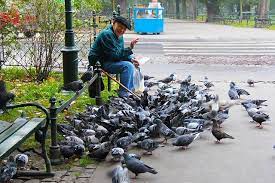
by Pigeon Patrol | May 25, 2021 | Pigeon Control, Pigeon Droppings, Pigeon Spikes, Pigeons
Some folks consider them an endearing part of urban life, others see them as an aggravation, but everyone recognizes this familiar wild neighbor. Pigeons may have been the first bird species to be domesticated, possibly as early as 6,500 years ago. The Egyptians used pigeons to carry the news of the coronation of Ramses III — more than 3,000 years before the United States was founded. Pigeons were well-equipped for this job, as they reach flight speeds of 15 to 60 miles per hour!
The rock dove, as the species also is known, is a European immigrant. Pigeons were introduced to North America by early European settlers. You’ll find pigeons in almost any city, town, or suburb on the continent. Their diet consists primarily of grains and seeds, along with insects and some greens — but pigeons aren’t terribly picky, and they’ll happily accept human food scraps and leftovers when available. From a pigeon’s point of view, city living can’t be beat. Food and water are readily available. Predators are few and far between. Plus, there’s plenty of free housing — pigeons like to live in large groups on window ledges, rooftops, bridges, and warehouses as these offer room for whole flocks to rest or take shelter in close proximity.
Family Life
Pigeons live in groups called “flocks.” Each flock has an equal number of male and female members. A courting male pursues his intended mate on the ground, circling her, with his neck feathers inflated and his tail spread, bowing and cooing all the while. Pigeons mate for life, but if one partner dies the survivor generally will attempt to find another mate.
Pigeons show a strong affinity for human-built structures. Nests, a haphazard combination of twigs, leaves, and a few feathers, are built on window ledges, behind signs, and under bridges. Parents take turns incubating the clutch of one or two white, unmarked eggs for between 16 and 19 days. After the eggs hatch, both parents feed the baby pigeons, or squabs, a crop secretion called “pigeon milk,” which is produced from the lining of the crop, a sac-like food storage chamber located under the bird’s esophagus. The milk is a highly nutritious and an efficient way of feeding young. Squabs fledge at four to six weeks of age but remain dependent on their parents for as long as the adults will tolerate them — generally another one or two weeks. Individuals may be capable of breeding at six months of age.
Pigeons leave their nesting and roosting sites during daylight hours to search for food, but they return at night, as well as periodically during the day when raising young.
Found an injured or orphaned pigeon?
Wildlife rehabilitation centers provide care for injured and orphaned wildlife until the animal can be released back to the wild. In most states, wildlife rehabilitation can be practiced only with a state and/or federal license.
Adult pigeons may suffer from broken bones, parasite infestations, and diseases, some of which may present a human health hazard. Without proper intervention, these birds may die from their injuries or be permanently disabled. Rehabilitators receive the special training needed to assess these problems and offer appropriate aid.
Baby pigeons may be covered with sparse, fuzzy down or spiky, emerging feathers, and their beaks can look rather deformed. Like all other infants, squabs have unique nutritional requirements. Baby bird food available at pet stores may claim to be appropriate for all birds, but this is simply not true. Furthermore, squabs must be fed through a tube inserted into their crop several times a day – a risky procedure even for experienced wildlife rehabilitators. Problems that result from an inappropriate diet, such as metabolic bone disease (also known as rickets), can debilitate an animal for life.
If you’ve found a pigeon in need of assistance, contact a wildlife rehabilitator.
Read more about orphaned or injured wildlife.
POSSIBLE CONFLICTS & SOLUTIONS
At first glance, the arrangement we have with pigeons appears to be ideal; we provide room and board and in return the birds add a little warmth and color to our cold concrete canyons. So what’s the problem? In a word — droppings.
Not only is pigeon poop unsightly, it can damage buildings, monuments, and automobiles, and if allowed to accumulate, human health problems may arise. A little patience and understanding go a long way toward resolving these problems. Removing the animals in question may seem like an obvious answer. The truth, however, is that results with this approach are short-lived because removal simply creates a vacancy that other animals quickly fill. Humane conflict prevention and resolution is less expensive and more effective in the long run. People can live in harmony with wildlife – you just have to know your wild neighbors!
Roost inhibitors, distress call devices, predator-shaped kites and scarecrows, and netting are effective and humane ways to prevent and/or solve most conflicts with pigeons. Go to our humane exclusion resources page to find vendors that sell these devices.
PUBLIC HEALTH CONCERNS
Pigeons are known carriers of cryptococcus and salmonella. However, there is little evidence linking pigeons directly to infections in humans.
Information about humane prevention of pigeon conflicts was prepared by Kieran Lindsey, Natural Assets Consulting, and reviewed by Richard F. Johnston, Ph.D., Professor Emeritus, Natural History Museum, University of Kansas.
Source
Pigeon Patrol Products & Services is the leading manufacturer and distributor of bird deterrent (control) products in Canada. Pigeon Patrol products have solved pest bird problems in industrial, commercial, and residential settings since 2000, by using safe and humane bird deterrents with only bird and animal friendly solutions. At Pigeon Patrol, we manufacture and offer a variety of bird deterrents, ranging from Ultra-flex Bird Spikes with UV protection, Bird Netting, 4-S Bird Gel and the best Ultrasonic and audible sound devices on the market today.
Voted Best Canadian wholesaler for Bird Deterrent products ten years in a row.
Contact us at 1- 877– 4– NO-BIRD, (604) 585-9279 or visit our website at www.pigeonpatrol.ca
Pigeon/Pigeon Patrol / Pigeons Roosting / Vancouver Pigeon Control /Bird Spikes / Bird Control / Bird Deterrent / Pigeon Deterrent? Surrey Pigeon Control / Pest /Seagull deterrent / Vancouver Pigeon Blog / Birds Inside Home / Pigeons in the cities / Ice Pigeons/ What to do about pigeons/ sparrows , Damage by Sparrows, How To Keep Raccoons Away, Why Are Raccoons Considered Pests/ De-fence / Pigeon Nesting/ Bird Droppings / Pigeon Dropping/ woodpecker control/ Professional Bird Control Company/ Keep The Birds Away/ Birds/rats/ seagull/pigeon/woodpecker/ dove/sparrow/pidgeon control/pidgeon problem/ pidgeon control/flying rats/ pigeon Problems/ bird netting/bird gel/bird spray/bird nails/ bird guard

by Pigeon Patrol | May 25, 2021 | Bird Deterrent Products, Bird Law, Bird Netting, Bird Spikes, Pigeon Control, Pigeon Droppings, Pigeon Patrol's Services
When it comes to birds, there may be more than just avian flu to be worried about. It has been suggested that there are over 60 other diseases that birds and their droppings can carry. The problem is especially worrisome in residential areas, as many of them are airborne and can be transferred to humans just by being around droppings.
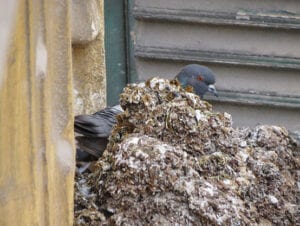
a pigeon bird standing by guano manure
Chicken farms can be fairly easily secured. With a combination of visual scare devices, sonic distress call emitters, ultrasonic disrupters and roost inhibitors other birds shouldn’t be a problem. If farmers just took this preventative action it could help contain the bird flu outbreak a good deal.
- Histoplasmosis is a respiratory disease that may be fatal. It results from a fungus growing in dried bird droppings.
- Candidiasis is a yeast or fungus infection spread by pigeons. The disease affects the skin, the mouth, the respiratory system, the intestines and the urogenital tract, especially the vagina. It is a growing problem for women, causing itching, pain and discharge.
- Cryptococcosis is caused by yeast found in the intestinal tract of pigeons and starlings. The illness often begins as a pulmonary disease and may later affect the central nervous system. Since attics, cupolas, ledges, schools, offices, warehouses, mills, barns, park buildings, signs, etc. are typical roosting and nesting sites, the fungus is apt to found in these areas.
- St. Louis Encephalitis, an inflammation of the nervous system, usually causes drowsiness, headache and fever. It may even result in paralysis, coma or death. St. Louis encephalitis occurs in all age groups, but is especially fatal to persons over age 60. The disease is spread by mosquitoes which have fed on infected house sparrow, pigeons and house finches carrying the Group B virus responsible for St. Louis encephalitis.
- Salmonellosis often occurs as “food poisoning” and can be traced to pigeons, starlings and sparrows. The disease bacteria are found in bird droppings; dust from droppings can be sucked through ventilators and air conditioners, contaminating food and cooking surfaces in restaurants, homes and food processing plants.
- E.coli. Cattle carry E. coli 0157:H7. When birds peck on cow manure, the E. coli go right through the birds and the bird droppings can land on or in a food or water supply.
Besides being direct carriers of disease, nuisance birds are frequently associated with over 50 kinds of ectoparasites, which can work their way throughout structures to infest and bite humans. About two-thirds of these pests may be detrimental to the general health and well-being of humans and domestic animals. The rest are considered nuisance or incidental pests.
A few examples of ectoparasites include:
- Bed bugs (Cimex lectularius) may consume up to five times their own weight in blood drawn from hosts which include humans and some domestic animals. In any extreme condition, victims may become weak and anemic. Pigeons, starlings and house sparrows are known to carry bed bugs.
- Chicken mites (Dermanyssus gallinae) are known carriers of encephalitis and may also cause fowl mite dermatitis and acariasis. While they subsist on blood drawn from a variety of birds, they may also attack humans. They have been found on pigeons, starlings and house sparrows.
- Yellow mealworms (Tenebrio molitor), perhaps the most common beetle parasites of people in the United States, live in pigeon nests. It is found in grain or grain products, often winding up in breakfast cereals, and may cause intestinal canthariasis and hymenolespiasis.
- West Nile Virus while West Nile is technically not transmitted to humans from birds, humans can get infected by the bite of a mosquito who has bitten an infected bird. The obvious lesson is that the fewer birds there are in any given area, the better. This translates into a smaller chance of an infected bird in that area, a smaller chance of a mosquito biting an infected bird and then biting a human.
Pigeon Patrol Products & Services is the leading manufacturer and distributor of bird deterrent (control) products in Canada. Pigeon Patrol products have solved pest bird problems in industrial, commercial, and residential settings since 2000, by using safe and humane bird deterrents with only bird and animal friendly solutions. At Pigeon Patrol, we manufacture and offer a variety of bird deterrents, ranging from Ultra-flex Bird Spikes with UV protection, Bird Netting, 4-S Bird Gel and the best Ultrasonic and audible sound devices on the market today.
Voted Best Canadian wholesaler for Bird Deterrent products ten years in a row.
Contact us at 1- 877– 4– NO-BIRD, (604) 585-9279 or visit our website at www.pigeonpatrol.ca
Pigeon/Pigeon Patrol / Pigeons Roosting / Vancouver Pigeon Control /Bird Spikes / Bird Control / Bird Deterrent / Pigeon Deterrent? Surrey Pigeon Control / Pest /Seagull deterrent / Vancouver Pigeon Blog / Birds Inside Home / Pigeons in the cities / Ice Pigeons/ What to do about pigeons/ sparrows , Damage by Sparrows, How To Keep Raccoons Away, Why Are Raccoons Considered Pests/ De-fence / Pigeon Nesting/ Bird Droppings / Pigeon Dropping/ woodpecker control/ Professional Bird Control Company/ Keep The Birds Away/ Birds/rats/ seagull/pigeon/woodpecker/ dove/sparrow/pidgeon control/pidgeon problem/ pidgeon control/flying rats/ pigeon Problems/ bird netting/bird gel/bird spray/bird nails/ bird guard
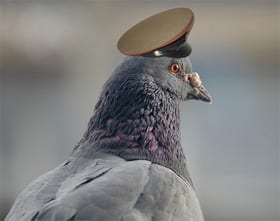
by Pigeon Patrol | May 25, 2021 | Bird Law, Columbidae, pet bird, Pigeon Predators, Pigeons in the News, Sparrows
Found in a field in mid-September by a couple out hiking in Ingersheim, northeastern France, the message was sent from one German military officer to another in 1910, when the area was still part of Germany, according to Dominique Jardy, curator of the nearby Linge Memorial museum.
Jardy told CNN the message was folded up inside a small aluminum capsule and the script is difficult to decipher.
A German friend, whom Jardy asked to translate the message, said the officer, who was based in the town of Colmar, is recounting German military exercises in the area.
“Platoon Potthof receives fire as they reach the western border of the parade ground, platoon Potthof takes up fire and retreats after a while,” the message reads, according to the AFP news agency. “In Fechtwald half a platoon was disabled. Platoon Potthof retreats with heavy losses.”
These losses are an estimate based on the war games rather than actual deaths, said Jardy, explaining that this is common practice during military exercises.
Difficulty in reading the script means there is some debate about whether the message was sent in 1910 or 1916. However, Jardy is convinced it is the former because he is not aware of any military maneuvers around Colmar in 1916, and the note uses terms specific to military exercises rather than warfare.
Artifacts like the message are almost never found today, Jardy said.
“It’s really very, very, very rare,” he said. “It’s really exceptional.”
The message will now go on display at the Linge Memorial museum, which tells the story of a battle between French and German forces in 1915.
France ceded Ingersheim and the surrounding area to Germany in 1871 after the Franco-German war, but the territory changed hands again in 1918 with the Allied victory in World War I.
Pigeon Patrol Products & Services is the leading manufacturer and distributor of bird deterrent (control) products in Canada. Pigeon Patrol products have solved pest bird problems in industrial, commercial, and residential settings since 2000, by using safe and humane bird deterrents with only bird and animal friendly solutions. At Pigeon Patrol, we manufacture and offer a variety of bird deterrents, ranging from Ultra-flex Bird Spikes with UV protection, Bird Netting, 4-S Bird Gel and the best Ultrasonic and audible sound devices on the market today.
Voted Best Canadian wholesaler for Bird Deterrent products ten years in a row.
Contact us at 1- 877– 4– NO-BIRD, (604) 585-9279 or visit our website at www.pigeonpatrol.ca
Pigeon/Pigeon Patrol / Pigeons Roosting / Vancouver Pigeon Control /Bird Spikes / Bird Control / Bird Deterrent / Pigeon Deterrent? Surrey Pigeon Control / Pest /Seagull deterrent / Vancouver Pigeon Blog / Birds Inside Home / Pigeons in the cities / Ice Pigeons/ What to do about pigeons/ sparrows , Damage by Sparrows, How To Keep Raccoons Away, Why Are Raccoons Considered Pests/ De-fence / Pigeon Nesting/ Bird Droppings / Pigeon Dropping/ woodpecker control/ Professional Bird Control Company/ Keep The Birds Away/ Birds/rats/ seagull/pigeon/woodpecker/ dove/sparrow/pidgeon control/pidgeon problem/ pidgeon control/flying rats/ pigeon Problems/ bird netting/bird gel/bird spray/bird nails/ bird guard
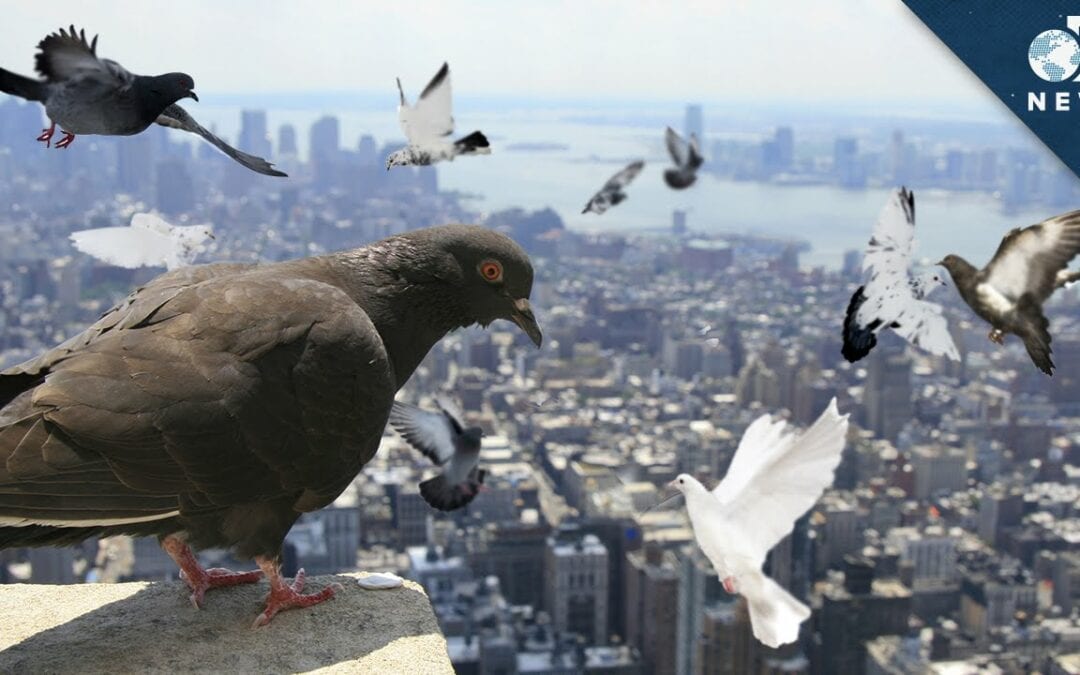
by Pigeon Patrol | May 25, 2021 | history of pigeons, pet bird, Pigeon Control, Pigeon Droppings, Pigeon Patrol's Services
Though they’re often described as “rats with wings” (a phrase popularized by the movie Stardust Memories), pigeons are actually pretty cool. From homing instincts to misleading rump feathers, here are 15 things you might not know about these avian adventurers.
1. THEY MIGHT BE THE FIRST DOMESTICATED BIRD.
The common city pigeon (Columba livia), also known as the rock pigeon, might be the first bird humankind ever domesticated. You can see them in art dating back as far as 4500 BCE in modern Iraq, and they’ve been a valuable source of food for thousands of years.
2. THEY WON OVER CHARLES DARWIN—AND NIKOLA TESLA.
Pigeon-breeding was a common hobby in Victorian England for everyone from well-off businessmen to average Joes, leading to some fantastically weird birds. Few hobbyists had more enthusiasm for the breeding process than Charles Darwin, who owned a diverse flock, joined London pigeon clubs, and hobnobbed with famous breeders. Darwin’s passion for the birds influenced his 1868 book The Variation of Animals and Plants Under Domestication, which has not one but two chapters about pigeons (dogs and cats share a single chapter).
Nikola Tesla was another great mind who enjoyed pigeons. He used to care for injured wild pigeons in his New York City hotel room. Hands down, Tesla’s favorite was a white female—about whom he once said, “I loved that pigeon, I loved her as a man loves a woman and she loved me. When she was ill, I knew and understood; she came to my room and I stayed beside her for days. I nursed her back to health. That pigeon was the joy of my life. If she needed me, nothing else mattered. As long as I had her, there was a purpose in my life.” Reportedly, he was inconsolable after she died.
3. THEY UNDERSTAND SPACE AND TIME.
In a 2017 Current Biology study, researchers showed captive pigeons a series of digital lines on a computer screen for either two or eight seconds. Some lines were short, measuring about 2.3 inches across; others were four times longer. The pigeons were trained to evaluate either the length of the line or how long it was displayed. They found that the more time a line was displayed, the longer in length the pigeon judged it to be. The reverse was true too: If the pigeons encountered a longer line, they thought it existed in time for a greater duration. Pigeons, the scientists concluded, understand the concepts of both time and space; the researchers noted “similar results have been found with humans and other primates.”
It’s thought that humans process those concepts with a brain region called the parietal cortex; pigeon brains lack that cortex, so they must have a different way of judging space and time.
4. THEY CAN FIND THEIR WAY BACK TO THE NEST FROM 1300 MILES AWAY.
The birds can do this even if they’ve been transported in isolation—with no visual, olfactory, or magnetic clues—while scientists rotate their cages so they don’t know what direction they’re traveling in. How they do this is a mystery, but people have been exploiting the pigeon’s navigational skills since at least 3000 BCE, when ancient peoples would set caged pigeons free and follow them to nearby land.
Their navigational skills also make pigeons great long-distance messengers. Sports fans in ancient Greece are said to have used trained pigeons to carry the results of the Ancient Olympics. Further east, Genghis Khan stayed in touch with his allies and enemies alike through a pigeon-based postal network.
5. THEY SAVED THOUSANDS OF HUMAN LIVES DURING WORLD WARS I AND II.
Pigeons’ homing talents continued to shape history during the 20th century. In both World Wars, rival nations had huge flocks of pigeon messengers. (America alone had 200,000 at its disposal in WWII.) By delivering critical updates, the avians saved thousands of human lives. One racing bird named Cher Ami completed a mission that led to the rescue of 194 stranded U.S. soldiers on October 4, 1918.
6. TWO PIGEONS ALMOST DISTRACTED FROM THE DISCOVERY OF EVIDENCE OF THE BIG BANG.
In 1964, scientists in Holmdel, New Jersey, heard hissing noises from their antenna that would later prove to be signals from the Big Bang. But when they first heard the sound, they thought it might be, among other things, the poop of two pigeons that were living in the antenna. “We took the pigeons, put them in a box, and mailed them as far away as we could in the company mail to a guy who fancied pigeons,” one of the scientists later recalled. “He looked at them and said these are junk pigeons and let them go and before long they were right back.” But the scientists were able to clean out the antenna and determine that they had not been the cause of the noise. The trap used to catch the birds (before they had to later be, uh, permanently removed) is on view at the Smithsonian Air & Space Museum.
7. YOU CAN TRAIN THEM TO BE ART SNOBS …
Japanese psychologist Shigeru Watanabe and two colleagues earned an Ig Nobel Prize in 1995 for training pigeons, in a lab setting, to recognize the paintings of Claude Monet and Pablo Picasso and to distinguish between the painters. The pigeons were even able to use their knowledge of impressionism and cubism to identify paintings of other artists in those movements. Later, Watanabe taught other pigeons to distinguish watercolor images from pastels. And in a 2009 experiment, captive pigeons he’d borrowed were shown almost two dozen paintings made by students at a Tokyo elementary school, and were taught which ones were considered “good” and which ones were considered “bad.” He then presented them with 10 new paintings and the avian critics managed to correctly guess which ones had earned bad grades from the school’s teacher and a panel of adults. Watanabe’s findings indicate that wild pigeons naturally categorize things on the basis of color, texture, and general appearance.
8. … AND TO DISTINGUISH WRITTEN WORDS.
In a 2016 study, scientists showed that pigeons can differentiate between strings of letters and actual words. Four of the birds built up a vocabulary of between 26 and 58 written English words, and though the birds couldn’t actually read them, they could identify visual patterns and therefore tell them apart. The birds could even identify words they hadn’t seen before.
9. FLUFFY PIGEON FEET MIGHT ACTUALLY BE PARTIAL WINGS.
A few pigeon breeds have fuzzy legs—which hobbyists call “muffs”—rather than scaly ones. According to a 2016 study, the DNA of these fluffy-footed pigeons leads their hind legs to take on some forelimb characteristics, making muffed pigeon legs look distinctly wing-like; they’re also big-boned. Not only do they have feathers, but the hindlimbs are somewhat big-boned, too. According to biologist Mike Shapiro, who led the study, “pigeons’ fancy feathered feet are partially wings.”
10. SOME PIGEONS DISTRACT FALCONS WITH WHITE RUMP FEATHERS.
In a life-or-death situation, a pigeon’s survival could depend upon its color pattern: Research has shown that wild falcons rarely go after pigeons that have a white patch of feathers just above the tail, and when the predators do target these birds, the attacks are rarely successful.
To figure out why this is, Ph.D. student Alberto Palleroni and a team tagged 5235 pigeons in the vicinity of Davis, California. Then, they monitored 1485 falcon-on-pigeon attacks over a seven-year span. The researchers found that although white-rumped pigeons comprised 20 to 25 percent of the area’s pigeon population, they represented less than 2 percent of all the observed pigeons that were killed by falcons; the vast majority of the victims had blue rumps. Palleroni and his team rounded up 756 white- and blue-rumped pigeons and swapped their rump feathers by clipping and pasting white feathers on blue rumps, and vice versa. The falcons had a much easier time spotting and catching the newly blue-rumped pigeons, while the pigeons that received the white feathers saw predation rates plummet.
Close observation revealed that the white patches distract birds of prey. In the wild, falcons dive-bomb other winged animals from above at high speeds. Some pigeons respond by rolling away in midair, and on a spiraling bird, white rump feathers can be eye-catching, which means that a patch of them may divert a hungry raptor’s focus long enough to make the carnivore miscalculate and zip right past its intended victim.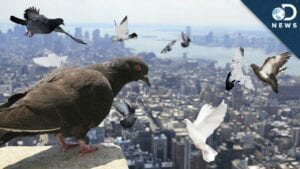
11. DODOS WERE RELATED TO TODAY’S PIGEONS.
Though most of this list focuses on the rock pigeon, there are 308 living species of pigeons and doves. Together, they make up an order of birds known as the columbiformes. The extinct dodo belonged to this group as well.
Flightless and (somewhat) docile, dodos once inhabited Mauritius, an island near Madagascar. The species had no natural predators, but when human sailors arrived with rats, dogs, cats, and pigs, it began to die out, and before the 17th century came to a close, the dodo had vanished altogether. DNA testing has confirmed that pigeons are closely related to the dodo, and the vibrant Nicobar pigeon (above) is its nearest genetic relative. A multi-colored bird with iridescent feathers, this near-threatened creature is found on small islands in the South Pacific and off Asia. Unlike the dodo, it can fly.
12. AT ONE POINT, MORE THAN ONE-QUARTER OF ALL THE BIRDS LIVING IN THE U.S. MAY HAVE BEEN PASSENGER PIGEONS.
Wild/feral rock pigeons reside in all 50 states, which makes it easy to forget that they’re invasive birds. Originally native to Eurasia and northern Africa, the species was (most likely) introduced to North America by French settlers in 1606. At the time, a different kind of columbiform—this one indigenous—was already thriving there: the passenger pigeon (Ectopistes migratorius). As many as 5 billion of them were living in America when England, Spain, and France first started colonizing, and they may have once represented anywhere from 25 to 40 percent of the total U.S. bird population. But by the early 20th century, they had become a rare sight, thanks to overhunting, habitat loss, and a possible genetic diversity issue. The last known passenger pigeon—a captive female named Martha—died on September 1, 1914.
13. THEY’RE REALLY GOOD AT MULTITASKING.
According to one study, they’re more efficient multitaskers than people are. Scientists at Ruhr-Universitat Bochum put together a test group of 15 humans and 12 pigeons and trained all of them to complete two simple jobs (like pressing a keyboard once a light bulb came on). They were also put in situations wherein they’d need to stop working on one job and switch over to another. In some trials, the participants had to make the change immediately. During these test runs, humans and pigeons switched between jobs at the same speed.
But in other trials, the test subjects were allowed to complete one assignment and then had to wait 300 milliseconds before moving on to the next job. Interestingly, in these runs, the pigeons were quicker to get started on that second task after the period ended. In the avian brain, nerve cells are more densely packed, which might enable our feathered friends to process information faster than we can under the right circumstances.
14. PIGEONS PRODUCE FAKE “MILK.”
Only mammals produce genuine milk, but pigeons and doves (along with some other species of birds) feed their young with something similar—a whitish liquid filled with nutrients, fats, antioxidants, and healthy proteins called “crop milk.” Both male and female pigeons create the milk in the crop, a section of the esophagus designed to store food temporarily. As is the case with mammal milk, the creation of crop milk is regulated by the hormone prolactin. Newly-hatched pigeons drink crop milk until they’re weaned off it after four weeks or so. (And if you’ve ever asked yourself, “Where are all the baby pigeons?” we have the answer for you right here.)
15. ONE STUDY SUGGESTS THAT, GIVEN THE RIGHT CONDITIONS, THEY’RE AS GOOD AT IDENTIFYING CANCER AS DOCTORS.
We’ve already established that pigeons are excellent at differentiating between artists and words, but a 2015 study revealed they can also distinguish between malignant and benign growths in the right conditions. Researchers at University of California Davis Medical Center put 16 pigeons in a room with magnified biopsies of potential breast cancers. If the pigeons correctly identified them as either benign or malignant, they got a treat, According to Scientific American.
“Once trained, the pigeons’ average diagnostic accuracy reached an impressive 85 percent. But when a “flock sourcing” approach was taken, in which the most common answer among all subjects was used, group accuracy climbed to a staggering 99 percent, or what would be expected from a pathologist. The pigeons were also able to apply their knowledge to novel images, showing the findings weren’t simply a result of rote memorization.”
Mammograms proved to be more of a challenge, however; the birds could memorize signs of cancer in the images they were trained on but could not identify the signs in new images.
No matter how impressive their results, “I don’t anticipate that pigeons, no matter how good they become at pathology or radiology, will be playing a role in actual patient care—certainly for the foreseeable future,” study co-author Richard M. Levenson told Scientific American. “There are just too many regulatory barriers—at least in the West.”
Source
Pigeon Patrol Products & Services is the leading manufacturer and distributor of bird deterrent (control) products in Canada. Pigeon Patrol products have solved pest bird problems in industrial, commercial, and residential settings since 2000, by using safe and humane bird deterrents with only bird and animal friendly solutions. At Pigeon Patrol, we manufacture and offer a variety of bird deterrents, ranging from Ultra-flex Bird Spikes with UV protection, Bird Netting, 4-S Bird Gel and the best Ultrasonic and audible sound devices on the market today.
Voted Best Canadian wholesaler for Bird Deterrent products ten years in a row.
Contact us at 1- 877– 4– NO-BIRD, (604) 585-9279 or visit our website at www.pigeonpatrol.ca
Pigeon/Pigeon Patrol / Pigeons Roosting / Vancouver Pigeon Control /Bird Spikes / Bird Control / Bird Deterrent / Pigeon Deterrent? Surrey Pigeon Control / Pest /Seagull deterrent / Vancouver Pigeon Blog / Birds Inside Home / Pigeons in the cities / Ice Pigeons/ What to do about pigeons/ sparrows , Damage by Sparrows, How To Keep Raccoons Away, Why Are Raccoons Considered Pests/ De-fence / Pigeon Nesting/ Bird Droppings / Pigeon Dropping/ woodpecker control/ Professional Bird Control Company/ Keep The Birds Away/ Birds/rats/ seagull/pigeon/woodpecker/ dove/sparrow/pidgeon control/pidgeon problem/ pidgeon control/flying rats/ pigeon Problems/ bird netting/bird gel/bird spray/bird nails/ bird guard
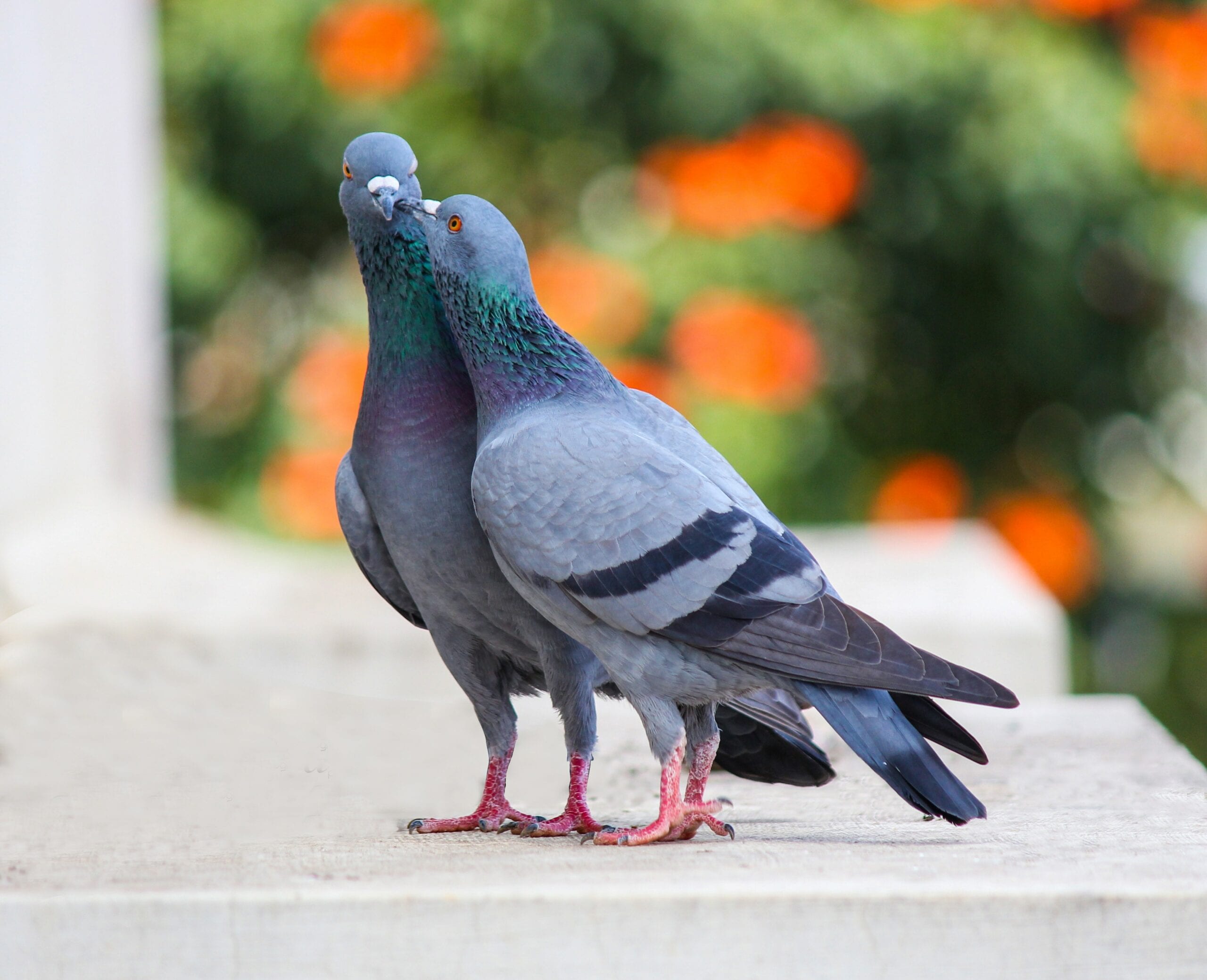
by Pigeon Patrol | May 17, 2021 | Bird Deterrent Products, Columbidae, Pigeon Patrol's Services, Pigeon Spikes, Pigeons
There isn’t anything called good or bad luck. It’s just people’s perception that make them think in such a way. If you are not in control of the situation you are in, you blame everything around you for your difficulties.
But you have to consider these things …
The biggest problem pigeons cause is the amount of feces (droppings) they produce. The build-up of pigeon feces on buildings and other structures is visually unappealing and is made worse by the fact that pigeon droppings are acidic and erode metal and stonework.
Pigeon droppings harbour fungi that could lead to hardening of lung tissues in humans and controlling the infection in the birds will help in reducing the incidence of lung diseases.
Pigeon droppings may pose a health hazard to the general public. Pigeons have been associated with a variety of diseases, including histoplasmosis and cryptococcosis.
Histoplasmosis is a disease caused by a fungus that grows in pigeon droppings. While removing droppings, people may breathe in some of the fungus. When exposure is high, the fungus can cause infection.
Symptoms of histoplasmosis begin to appear about 10 days after initial infection and can include fatigue, fever, and chest pains. Most infections have no symptoms or appear as a mild respiratory illness. People with weakened immune systems are generally more at risk of developing histoplasmosis.
Cryptococcosis is another fungal disease related to pigeon droppings and grows in soils throughout the world. A major risk factor for infection is a compromised immune system.
Exposure to pigeon dropping is the cause for developing pneumonia in certain cases in India according to health experts.
Although avian influenza (bird flu) viruses are less common in birds more closely associated with human environments such as domestic chickens, turkeys, pheasants, pigeons and parrots, we still have to be careful.
So it is not advisable to have pigeon nests in human dwellings.
Source
Pigeon Patrol Products & Services is the leading manufacturer and distributor of bird deterrent (control) products in Canada. Pigeon Patrol products have solved pest bird problems in industrial, commercial, and residential settings since 2000, by using safe and humane bird deterrents with only bird and animal friendly solutions. At Pigeon Patrol, we manufacture and offer a variety of bird deterrents, ranging from Ultra-flex Bird Spikes with UV protection, Bird Netting, 4-S Bird Gel and the best Ultrasonic and audible sound devices on the market today.
Voted Best Canadian wholesaler for Bird Deterrent products ten years in a row.
Contact us at 1- 877– 4– NO-BIRD, (604) 585-9279 or visit our website at www.pigeonpatrol.ca
Pigeon/Pigeon Patrol / Pigeons Roosting / Vancouver Pigeon Control /Bird Spikes / Bird Control / Bird Deterrent / Pigeon Deterrent? Surrey Pigeon Control / Pest /Seagull deterrent / Vancouver Pigeon Blog / Birds Inside Home / Pigeons in the cities / Ice Pigeons/ What to do about pigeons/ sparrows , Damage by Sparrows, How To Keep Raccoons Away, Why Are Raccoons Considered Pests/ De-fence / Pigeon Nesting/ Bird Droppings / Pigeon Dropping/ woodpecker control/ Professional Bird Control Company/ Keep The Birds Away/ Birds/rats/ seagull/pigeon/woodpecker/ dove/sparrow/pidgeon control/pidgeon problem/ pidgeon control/flying rats/ pigeon Problems/ bird netting/bird gel/bird spray/bird nails/ bird guard
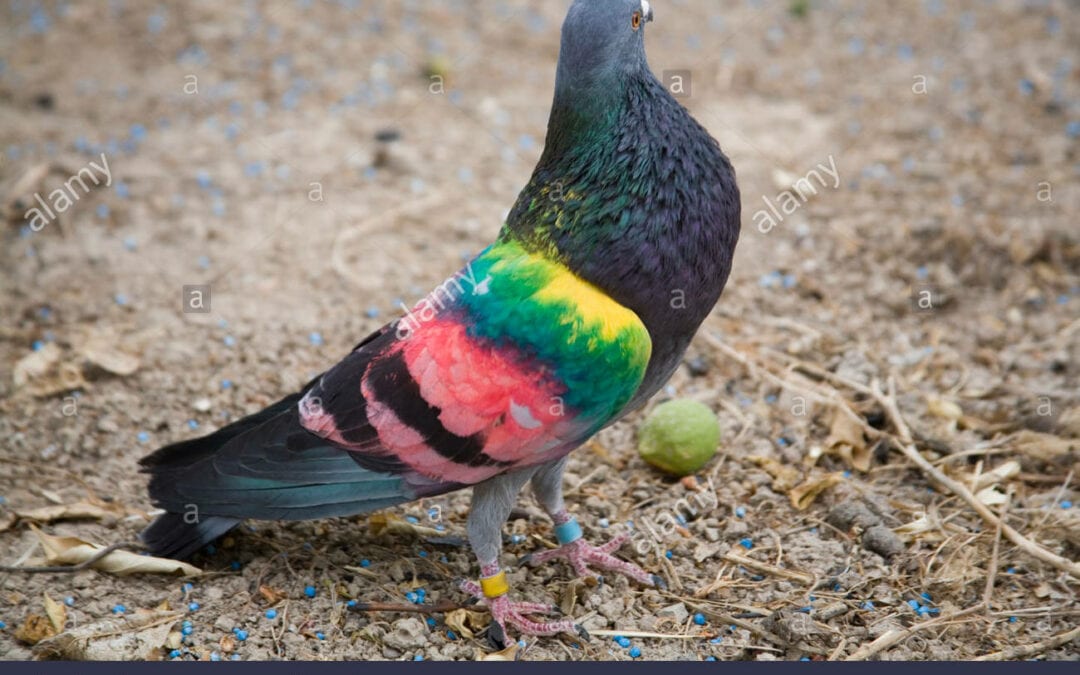
by Pigeon Patrol | May 17, 2021 | Bird Law, Doves, history of pigeons, pet bird, Pigeon Control
Earth’s magnetic field plays a vital role in everything from animal migration to protecting the Earth from the Sun’s harsh solar wind. Now, a recent study finally sheds light on how some birds visually see Earth’s magnetic field. Birds use Earth’s magnetic field as sort of a heads-up display to help them navigate the globe.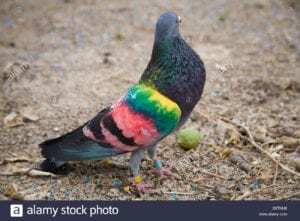
The Earth’s magnetic field is a result of the movement or convection of liquid iron in the outer core. As the liquid metal in the outer core moves, it generates electric currents, which lead to a magnetic field. The continual movement of liquid metal through this magnetic field creates stronger electrical currents and thus a stronger magnetic field. This positive feedback loop is called the geomagnetic dynamo.
While scientists have known for quite some time that birds can see Earth’s magnetic field, it was unclear exactly how birds are able to visualize the magnetic field. Two recent studies from researchers at Lund University in Sweden and Carl von Ossietzky University Oldenburg in Germany discovered that the ability is a result of a special protein in bird’s eyes. The two papers studied European robins and zebra finches and found evidence for an unusual eye protein called Cry4.
The Cry4 protein is part of a class of protein called a cryptochrome that is sensitive to blue light. Cryptochromes are found in both plants and animals and are responsible for circadian rhythms in various species. In the two bird species above, it appears that the presence of cryptochromes, specifically the Cry4 protein, is responsible for the ability of birds to visually detect Earth’s magnetic field.
The ability to see Earth’s magnetic field, known as magnetoreception, relies on the presence of specifically the blue wavelength of light. The complex process involves “radical” intermediate molecules which are sensitive to Earth’s magnetic field. The Earth’s magnetic field, as it relates to the direction the bird is facing, could alter the intermediate radical molecules differently, giving the bird a sense for where it is facing in relation to the Earth’s magnetic field.
The research team also found that the Cry4 protein was produced in much higher amounts in European robins during migration season. Perhaps this would give the robin a more precise picture of Earth’s magnetic field throughout its migration.
While the exact way birds visualize Earth’s magnetic field is part of further investigation, scientists believe the Cry4 protein acts as sort of a filter over the bird’s vision. This filter would allow birds to see a sort of compass of the Earth and direct their migratory flights accordingly.
Scientists at the University of Illinois at Urbana-Champaign believe birds see Earth’s magnetic field through a filter similar to the figure above. This would act to guide birds in the right direction through migration.
Source
Pigeon Patrol Products & Services is the leading manufacturer and distributor of bird deterrent (control) products in Canada. Pigeon Patrol products have solved pest bird problems in industrial, commercial, and residential settings since 2000, by using safe and humane bird deterrents with only bird and animal friendly solutions. At Pigeon Patrol, we manufacture and offer a variety of bird deterrents, ranging from Ultra-flex Bird Spikes with UV protection, Bird Netting, 4-S Bird Gel and the best Ultrasonic and audible sound devices on the market today.
Voted Best Canadian wholesaler for Bird Deterrent products ten years in a row.
Contact us at 1- 877– 4– NO-BIRD, (604) 585-9279 or visit our website at www.pigeonpatrol.ca
Pigeon/Pigeon Patrol / Pigeons Roosting / Vancouver Pigeon Control /Bird Spikes / Bird Control / Bird Deterrent / Pigeon Deterrent? Surrey Pigeon Control / Pest /Seagull deterrent / Vancouver Pigeon Blog / Birds Inside Home / Pigeons in the cities / Ice Pigeons/ What to do about pigeons/ sparrows , Damage by Sparrows, How To Keep Raccoons Away, Why Are Raccoons Considered Pests/ De-fence / Pigeon Nesting/ Bird Droppings / Pigeon Dropping/ woodpecker control/ Professional Bird Control Company/ Keep The Birds Away/ Birds/rats/ seagull/pigeon/woodpecker/ dove/sparrow/pidgeon control/pidgeon problem/ pidgeon control/flying rats/ pigeon Problems/ bird netting/bird gel/bird spray/bird nails/ bird guard
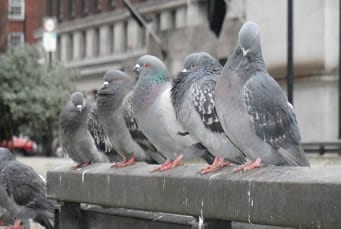
by Pigeon Patrol | May 17, 2021 | Bird Deterrent Products, Pigeon Patrol's Services, Pigeons
The Duke of Queensberry once placed a bet that he could make a letter travel fifty miles in an hour without the help of carrier pigeons.
It is difficult to put a date to when cricket s love-hate relationship with pigeons had started, but it was obviously centuries before Jacques Rudolph accidentally killed one on the ground or Glenn McGrath acquired his famous nickname or Arafat Sunny, cricket s most famous pigeon fancier, got his cap or even before Charlie Elliott spotted Basil D Oliveira setting a cat among a flock in the 1968 Oval Test.
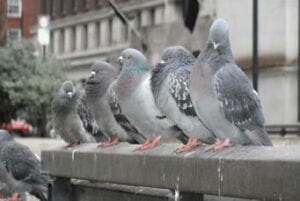 The pigeons, of course, did their bit to make their presence felt in the realm of cricket: they have blessed statues of cricketers in characteristic fashion; they have flocked to grounds in large numbers; and have even featured in luncheon menus.
The pigeons, of course, did their bit to make their presence felt in the realm of cricket: they have blessed statues of cricketers in characteristic fashion; they have flocked to grounds in large numbers; and have even featured in luncheon menus.
Of course, the Pigeon-Hole principle turned out to be immensely useful when someone argued that Chris Martin had never reached the score of two. The bookies have had their shares of stool pigeons inside dressing-rooms, while Shane Warne had reduced many a competent batsman to clay pigeons during his illustrious career.
But seldom have pigeons competed with cricketers.
The Dukedom of Queensberry, created in 1684, still exists. The 6th Duke (also 4th Duke of Buccleuch but usually referred to as Earl of Dalkeith), played 3 First-Class matches. The 8th and 9th Dukes became MCC Presidents.
The greatest cricketer of them was the 8th Duke, William Montagu Douglas Scott (also 6th Duke of Buccleuch), who played for 22 First-Class matches, mostly for Oxford, Middlesex, and MCC. He scored 100 and 66 in the Varsity match of 1887.
So yes, they were a family who liked cricket.
The incident involves a Duke of Queensberry, but one cannot be sure which one. The 6th Duke is the most likely suspect, since he became Duke in 1812 and the anecdote appeared in print in May 1825.
The Duke once placed a bet that he would help carry a letter across fifty miles inside an hour without the aid of carrier pigeons. This was obviously an improbable ask.
So birds especially carrier pigeons were the fastest method for any transport of letters over a long distance. It is not clear whom he had challenged, but that person readily took up the bet.
The Duke obviously had a plan. He now started to work on it. He enclosed the letter inside a cricket ball. Exactly how this was done is not clear. Perhaps he had a ball made from scratch with the letter inside.
Once that was done, he placed 24 expert cricketers along the five-mile stretch. The cricketers, placed strategically, picked up the ball and transferred to each other .
Exactly how this was done is not clear. It was obviously not one throw per person, since in that case every throw would have to be a ridiculous two miles on average, and nobody in human history hit the 150-yard mark with a single throw. Nobody has hit a 175-yard six either, but perhaps this was hit with something heavier than a cricket bat. Perhaps the ball was of a different material or mass.
Whatever the method was, the Duke won the bet.
Pigeon Patrol Products & Services is the leading manufacturer and distributor of bird deterrent (control) products in Canada. Pigeon Patrol products have solved pest bird problems in industrial, commercial, and residential settings since 2000, by using safe and humane bird deterrents with only bird and animal friendly solutions. At Pigeon Patrol, we manufacture and offer a variety of bird deterrents, ranging from Ultra-flex Bird Spikes with UV protection, Bird Netting, 4-S Bird Gel and the best Ultrasonic and audible sound devices on the market today.
Voted Best Canadian wholesaler for Bird Deterrent products ten years in a row.
Contact us at 1- 877– 4– NO-BIRD, (604) 585-9279 or visit our website at www.pigeonpatrol.ca
Pigeon/Pigeon Patrol / Pigeons Roosting / Vancouver Pigeon Control /Bird Spikes / Bird Control / Bird Deterrent / Pigeon Deterrent? Surrey Pigeon Control / Pest /Seagull deterrent / Vancouver Pigeon Blog / Birds Inside Home / Pigeons in the cities / Ice Pigeons/ What to do about pigeons/ sparrows , Damage by Sparrows, How To Keep Raccoons Away, Why Are Raccoons Considered Pests/ De-fence / Pigeon Nesting/ Bird Droppings / Pigeon Dropping/ woodpecker control/ Professional Bird Control Company/ Keep The Birds Away/ Birds/rats/ seagull/pigeon/woodpecker/ dove/sparrow/pidgeon control/pidgeon problem/ pidgeon control/flying rats/ pigeon Problems/ bird netting/bird gel/bird spray/bird nails/ bird guard

by Pigeon Patrol | May 17, 2021 | Bird Netting, Pigeon Patrol's Services, Pigeon Predators, Pigeon Spikes, Pigeons, Pigeons in the News
When pigeons live on our buildings and deface it, it is possible to remove the birds by excluding them (netting) from the area, but we don’t need to kill them. You should make it a priority to clean the area’s they have been since pigeons do carry mites and you don’t want the mites going in your building when the pigeons are gone.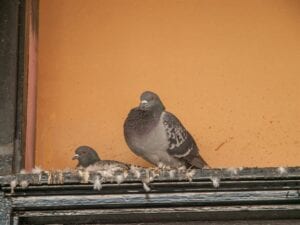
Pigeons are frequently called rats with wings. The term “rats with wings” came from a 1980 play, “Stardust Memories” starring Woody Allen. Allen used the term in the movie and apparently someone with a vested interest in misleading the public decided to use it in a campaign to drum up business for pigeon control. The facts are just the opposite. Yes, there are some diseases that can be transmitted by pigeons, but no more so than any other bird, including such popular pets as parakeets, canaries, etc.
They do have their attributes. During World War I, pigeons carried thousands of messages that saved many hundreds of lives. In World War II pigeons continued to be used. Radios were frequently not working due to damage or when unfavorable terrain rendered them almost useless. Pigeons continued to fly through enemy fire, and amazingly 95% of them completed their missions. One pigeon in particular, named “Cher Ami” was a World War I Carrier Pigeon, one of 600 birds owned and flown by the U.S. Signal Corps. Cher Ami was originally bred by the British Signal Corps. He was transferred to the Americans after the war on Oct. 27, 1918.
Cher Ami delivered 12 important messages within the American sector at Verdun, France. On his last mission, Cher Ami, shot through the breast by enemy fire, managed to return to his loft. A message capsule was found dangling from the ligaments of one of his legs that had also been shattered by enemy fire. The message he carried was from Major Whittlesey’s “Lost Battalion” of the 77th Infantry Division that had been isolated from other American forces. Just a few hours after the message was received, 194 survivors of the battalion were safe behind American lines. Cher Ami was awarded the French “Croix de Guerre” with Palm for his heroic service between the forts of Verdun. He died in 1919 as a result of his battle wounds. Cher Ami was later inducted into the Racing Pigeon Hall of Fame in 1931 and received a gold medal from the Organized Bodies of American Racing Pigeon Fanciers in recognition of his extraordinary service during World War I.
Pigeons continued their valiant service during World War II and the Korean War. The Dickin Medal for Valor, an award only for animals, was given to 31 pigeons in World War II, more than any other animal. (The next closest animals were dogs, with 8 medals).
Source
Pigeon Patrol Products & Services is the leading manufacturer and distributor of bird deterrent (control) products in Canada. Pigeon Patrol products have solved pest bird problems in industrial, commercial, and residential settings since 2000, by using safe and humane bird deterrents with only bird and animal friendly solutions. At Pigeon Patrol, we manufacture and offer a variety of bird deterrents, ranging from Ultra-flex Bird Spikes with UV protection, Bird Netting, 4-S Bird Gel and the best Ultrasonic and audible sound devices on the market today.
Voted Best Canadian wholesaler for Bird Deterrent products ten years in a row.
Contact us at 1- 877– 4– NO-BIRD, (604) 585-9279 or visit our website at www.pigeonpatrol.ca
Pigeon/Pigeon Patrol / Pigeons Roosting / Vancouver Pigeon Control /Bird Spikes / Bird Control / Bird Deterrent / Pigeon Deterrent? Surrey Pigeon Control / Pest /Seagull deterrent / Vancouver Pigeon Blog / Birds Inside Home / Pigeons in the cities / Ice Pigeons/ What to do about pigeons/ sparrows , Damage by Sparrows, How To Keep Raccoons Away, Why Are Raccoons Considered Pests/ De-fence / Pigeon Nesting/ Bird Droppings / Pigeon Dropping/ woodpecker control/ Professional Bird Control Company/ Keep The Birds Away/ Birds/rats/ seagull/pigeon/woodpecker/ dove/sparrow/pidgeon control/pidgeon problem/ pidgeon control/flying rats/ pigeon Problems/ bird netting/bird gel/bird spray/bird nails/ bird guard
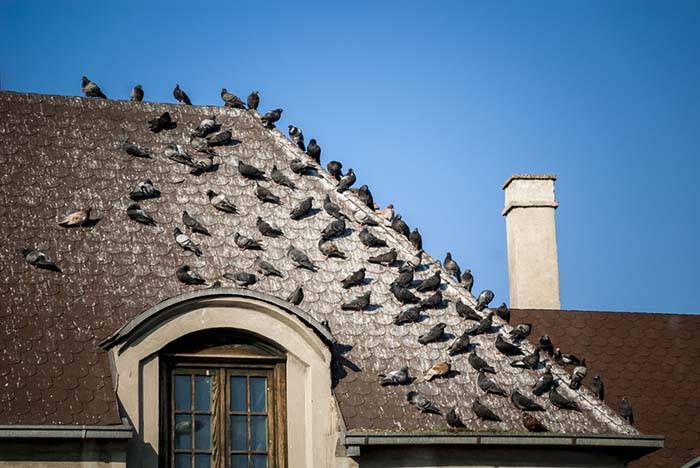
by Pigeon Patrol | May 17, 2021 | Bird Netting, Bird Spikes, Pigeon Control, Pigeon Droppings
Pigeons are easily recognizable by their distinct coloring. With their white-gray rump, iridescent facial feathers and black stripes on their tails and wings, these birds are easy to identify. Pigeons reproduce incredibly quickly, and mating occurs year round. Despite their speedy reproduction rates, pigeons are monogamous creatures that lay one or two eggs at a time, which hatch within 18 days. Baby pigeons are fed “pigeon milk,” or regurgitated food, by both their parents until they are old enough to find food on their own.
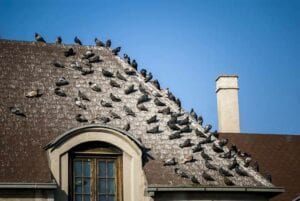
Pigeon Habits
Pigeons prefer grains, but they are not picky when it comes to their meals. Much of their diet comes from humans who drop or spill their food, or place leftovers in open trash cans that pigeons can scavenge. These birds like to hang out on ledges and other narrow areas high above the ground. They like to roost in covered, high areas, and their nests can frequently be found in places like steeples or under bridges.
Pigeon Habitats
Pigeons are true city dwellers who are dependent on humans to provide food, roosting and nesting sites. This is why you often see them gathered around city parks, buildings and bridges. Pigeons are also commonly found around agricultural areas, as well as warehouses, feed mills and grain elevators.
Pigeon Threats
Often called the “rats of the sky,” pigeons can be incredibly problematic. These birds can carry dangerous diseases like cryptococcosis, toxoplasmosis, salmonella, food poisoning and more. Their droppings may also harbor the growth of fungus, which causes histoplasmosis, which can accelerate the aging of structures and statues. Even more alarming, these social birds often serve as unwitting hosts to fleas, lice, mites, ticks and other pests, which can create secondary infestations.
Signs You Have a Pigeon Infestation
The most obvious sign of a pigeon infestation is the presence of many birds, pigeon nests or their droppings.
How To Prevent an Infestation
The best way to prevent pigeons from roosting in or near your house is to make your home undesirable. Remove any and all food they could get access to, place pointy objects on pigeon-friendly surfaces and place nets across open areas.
How to Get Rid of Pigeons
The steps for pigeon removal and prevention are the same: make their living space uninhabitable. Killing pigeons is not effective and it will not root out the source of the problem. Instead, eliminate all food sources and remove their nests and replace them with objects that prevent them from returning.
Source
Pigeon Patrol Products & Services is the leading manufacturer and distributor of bird deterrent (control) products in Canada. Pigeon Patrol products have solved pest bird problems in industrial, commercial, and residential settings since 2000, by using safe and humane bird deterrents with only bird and animal friendly solutions. At Pigeon Patrol, we manufacture and offer a variety of bird deterrents, ranging from Ultra-flex Bird Spikes with UV protection, Bird Netting, 4-S Bird Gel and the best Ultrasonic and audible sound devices on the market today.
Voted Best Canadian wholesaler for Bird Deterrent products ten years in a row.
Contact us at 1- 877– 4– NO-BIRD, (604) 585-9279 or visit our website at www.pigeonpatrol.ca
Pigeon/Pigeon Patrol / Pigeons Roosting / Vancouver Pigeon Control /Bird Spikes / Bird Control / Bird Deterrent / Pigeon Deterrent? Surrey Pigeon Control / Pest /Seagull deterrent / Vancouver Pigeon Blog / Birds Inside Home / Pigeons in the cities / Ice Pigeons/ What to do about pigeons/ sparrows , Damage by Sparrows, How To Keep Raccoons Away, Why Are Raccoons Considered Pests/ De-fence / Pigeon Nesting/ Bird Droppings / Pigeon Dropping/ woodpecker control/ Professional Bird Control Company/ Keep The Birds Away/ Birds/rats/ seagull/pigeon/woodpecker/ dove/sparrow/pidgeon control/pidgeon problem/ pidgeon control/flying rats/ pigeon Problems/ bird netting/bird gel/bird spray/bird nails/ bird guard
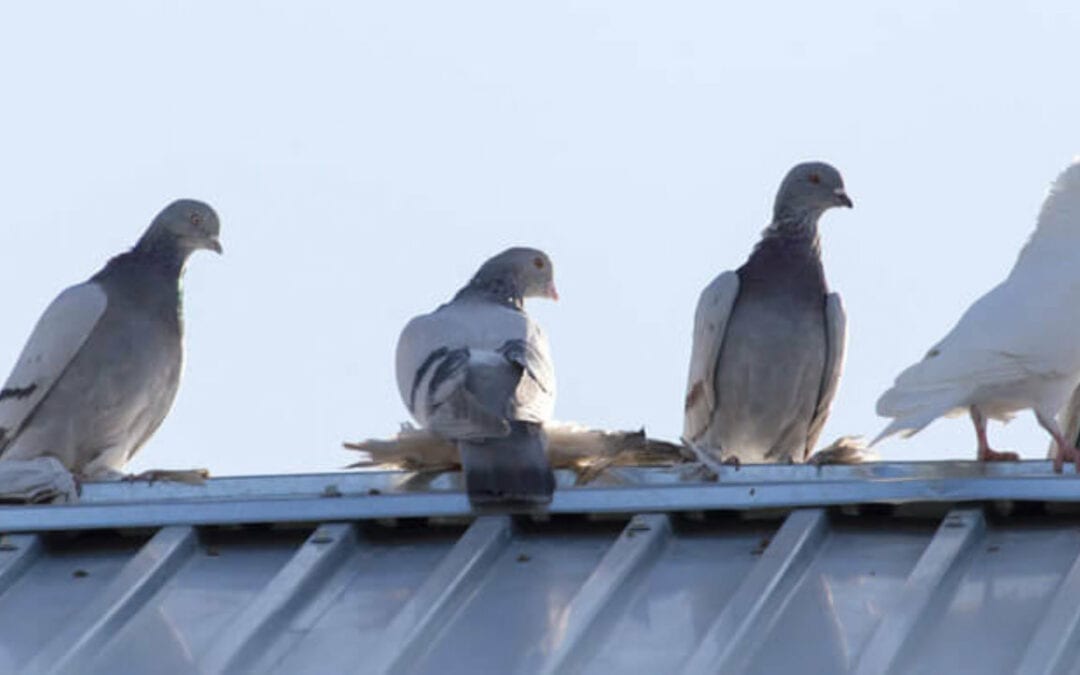
by Pigeon Patrol | May 10, 2021 | Bird Law, Pigeon Droppings, Pigeon Patrol's Services, Pigeon Spikes, Pigeons
Pigeons are bad news. While most homeowners don’t think twice about a few birds sitting on top of their home’s roof, they should when it comes to these “flying rats.” Pigeons can be a destructive pest, and their nests and droppings can damage your roof.
When you have pigeons on your roof, call KY-KO Pest Prevention to schedule your free pest inspection here in the Valley. We’re experts in humane pigeon control and removal, and we’ll get rid of the birds without any mess or fuss.
Dealing with pigeons on your roof
Unless you’re a business or commercial space, most homeowners don’t see pigeons as that big of a problem, or a threat like scorpions or rodents are. However, even if they’re not inside your home, pigeons can do serious damage.
1. Pigeon droppings are bad for your roof
Pigeon droppings naturally have high acidity, which actually is the case with most bird droppings. In fact, the acid content in them is so strong that it can cause damage to most roofing materials, particularly the underlayment of your roof.
If these droppings are left on the roof to accumulate, they’ll add to the wear-and-tear experienced by your roof. Here in Phoenix, your roof is already under assault from the elements, including the summer sun and the monsoon rains. Let KY-KO help you with pigeon problems, so that your home has one less thing to worry about.
2. Pigeon nests block water from moving off your roof
In addition to the problems caused by pigeon droppings, these birds also build their nests in roof drains, corners, and rain gutters. When the rain comes, these nests act as dams, blocking water from moving off of your roof and leading to the accumulation of water, wastage, and debris.
Severe cases of this issue can lead to roof collapses, as the continuous accumulation of water and dirt on the roof adds to the weight. The presence of pooled water is also not good for your roof’s structural integrity.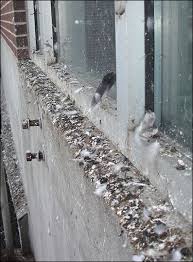
3. Pigeons will make a mess of your home and yard
For anyone who has parked their car in a public place and come back hours later to a mess, you know what this means. Left unchecked, pigeons will not only make a mess of your roof, but also your yard, your landscaping, your cars in the driveway—you get the idea.
Don’t have your home be the one on the block with obvious pigeon problems. Call KY-KO, and we’ll work on implementing a safe and humane way to keep pigeons away from your home.
For humane pigeon control and removal
Never take a pigeon infestation lightly. Given enough time, these birds can cause serious damage to your roof if you do not deal with them at the right time.
Source
Pigeon Patrol Products & Services is the leading manufacturer and distributor of bird deterrent (control) products in Canada. Pigeon Patrol products have solved pest bird problems in industrial, commercial, and residential settings since 2000, by using safe and humane bird deterrents with only bird and animal friendly solutions. At Pigeon Patrol, we manufacture and offer a variety of bird deterrents, ranging from Ultra-flex Bird Spikes with UV protection, Bird Netting, 4-S Bird Gel and the best Ultrasonic and audible sound devices on the market today.
Voted Best Canadian wholesaler for Bird Deterrent products ten years in a row.
Contact us at 1- 877– 4– NO-BIRD, (604) 585-9279 or visit our website at www.pigeonpatrol.ca
Pigeon/Pigeon Patrol / Pigeons Roosting / Vancouver Pigeon Control /Bird Spikes / Bird Control / Bird Deterrent / Pigeon Deterrent? Surrey Pigeon Control / Pest /Seagull deterrent / Vancouver Pigeon Blog / Birds Inside Home / Pigeons in the cities / Ice Pigeons/ What to do about pigeons/ sparrows , Damage by Sparrows, How To Keep Raccoons Away, Why Are Raccoons Considered Pests/ De-fence / Pigeon Nesting/ Bird Droppings / Pigeon Dropping/ woodpecker control/ Professional Bird Control Company/ Keep The Birds Away/ Birds/rats/ seagull/pigeon/woodpecker/ dove/sparrow/pidgeon control/pidgeon problem/ pidgeon control/flying rats/ pigeon Problems/ bird netting/bird gel/bird spray/bird nails/ bird guard
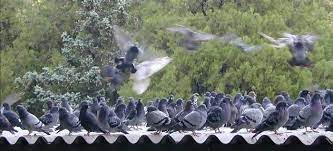
by Pigeon Patrol | May 10, 2021 | Bird Deterrent Products, Bird Law, Bird Netting, Bird Spikes, Columbidae, Pigeon Predators, Pigeon Spikes
Most of us love having backyard birds to watch and to feed. The music of songbirds is a sure sign of spring. On the other hand, bird damage to lawns can be extensive. If you’re finding small holes in your grass and you see a lot of birds around, the damage is probably caused by birds foraging for food. There are some ways you can keep birds from digging up lawn and grass. Read on to learn more.
Why are Birds Digging up my Lawn?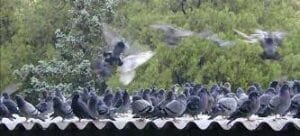
It’s not hard to identify bird damage to lawns. If you see a lot of birds in your yard and you find small, about one-inch (2.5-cm.) holes in the turf, it’s most likely bird-related damage. What are birds digging for in your lawn? The phenomenon of birds digging holes in lawns has an easy explanation: food. They’re looking for tasty snacks, so if you’re seeing a lot of bird damage, it means you have an insect problem. Basically, your lawn is the best restaurant around because it has so many bugs. Birds are simply foraging for grubs, worms, and insects. The good news about this is that the grubs and insects will actually do more damage to your lawn than the birds will, and the birds are helping you control the population.
How to Keep Birds from Digging up Lawn
If you want to avoid the bird damage of small holes all over your lawn, you have to get rid of the insect pests. To get rid of your bug problem, invest in a pesticide, preferably something natural. You can either have it applied by a professional lawn company or you can do it yourself. It is important to time the application. If you have grubs, for instance, you need to apply in late spring or early summer. It’s also important to time application to avoid harming the birds. Apply the pesticide in late afternoon so it will be dry by the next morning when the birds reappear to search for breakfast. If you prefer not to have birds at all around your property, there is little you can do but you can try using a few scare tactics that may keep the birds away.
Source
Pigeon Patrol Products & Services is the leading manufacturer and distributor of bird deterrent (control) products in Canada. Pigeon Patrol products have solved pest bird problems in industrial, commercial, and residential settings since 2000, by using safe and humane bird deterrents with only bird and animal friendly solutions. At Pigeon Patrol, we manufacture and offer a variety of bird deterrents, ranging from Ultra-flex Bird Spikes with UV protection, Bird Netting, 4-S Bird Gel and the best Ultrasonic and audible sound devices on the market today.
Voted Best Canadian wholesaler for Bird Deterrent products ten years in a row.
Contact us at 1- 877– 4– NO-BIRD, (604) 585-9279 or visit our website at www.pigeonpatrol.ca
Pigeon/Pigeon Patrol / Pigeons Roosting / Vancouver Pigeon Control /Bird Spikes / Bird Control / Bird Deterrent / Pigeon Deterrent? Surrey Pigeon Control / Pest /Seagull deterrent / Vancouver Pigeon Blog / Birds Inside Home / Pigeons in the cities / Ice Pigeons/ What to do about pigeons/ sparrows , Damage by Sparrows, How To Keep Raccoons Away, Why Are Raccoons Considered Pests/ De-fence / Pigeon Nesting/ Bird Droppings / Pigeon Dropping/ woodpecker control/ Professional Bird Control Company/ Keep The Birds Away/ Birds/rats/ seagull/pigeon/woodpecker/ dove/sparrow/pidgeon control/pidgeon problem/ pidgeon control/flying rats/ pigeon Problems/ bird netting/bird gel/bird spray/bird nails/ bird guard

by Pigeon Patrol | May 10, 2021 | Columbidae, Doves, pet bird, Pigeon Droppings, Pigeon Predators, Pigeons
This is the last bite of the food portion of NPR Morning Edition host Steve Inskeep’s Revolutionary Road trip from Tunisia to Cairo, in which Steve arrives in Cairo and samples stuffed pigeon.
Dear Salt,
Since my first visit to Egypt in 2011, my NPR colleague Kimberly Adams has been insisting that I try stuffed pigeon. It’s a delicacy in Egypt. I finally took her advice the other night at a Cairo restaurant called the Abu Sid. They serve you the whole bird, with a variety of stuffings; I ordered pigeon stuffed with rice.
The birds are small — small enough that a single order consists of two. There’s probably more rice than meat inside, but the rice was moist. I hope it’s not too much of a cliché to say that the meat tasted like the darker parts of a chicken.
As you know, many Americans are a little shocked to hear about stuffed pigeon because in the United States, pigeons are widely regarded as little more than rats with wings. And this leads to my question:
Roughly how much of the world regards pigeon as a delicacy and how much as a disgusting pest?
Dear Steve,
The short answer seems to be that in most parts of the world, including some fancy U.S. restaurants, young pigeons (squab) are highly prized for the moist, dark, gamey flesh you just tasted.
These avian superstars are the very same species as the Rock Pigeons that drive New Yorkers crazy, says Courtney Humphries, author of Superdove: How the Pigeon Took Manhattan… And the World. But “the main difference between the pigeons on your windowsill and on your plate is: Lifestyle,” Humphries says.
Those juicy little squabs we eat didn’t scavenge the city for garbage.
If you dine on pigeon in the U.S. – whether in Chinatown, Little Italy or a white tablecloth restaurant — your bird probably came from somewhere like the Palmetto Pigeon Plant in South Carolina. This institution, founded in the 1920s, raises hundreds of thousands of squabs every year, as well as Cornish hens and poussin.
And you can be sure that the pigeons you ate in Cairo were raised for the plate too. “Egyptian pigeons are bred only for consumption,” says Anne-Marie Bissada, a Canadian-Egyptian journalist who writes the cooking blog The Egyptian Kitchen. “All throughout the countryside, you can find these little towers that keep all the pigeons,” she says.
But, there are feral pigeons in Egyptian cities, she tells The Salt, and “the pigeons that we hate in North America are just as hated there, too.”
In fact, it seems that once you get a taste for grilled or stuffed pigeon, a pigeon problem won’t be far behind. Andrew Blechman, who wrote Pigeons: The Fascinating Saga of the World’s Most Revered and Reviled Bird, says “the vast majority of today’s feral pigeons can trace their roots to the proliferation of dovecotes across Eurasia. Ancient Rome was populated with feral pigeons nesting on its monuments and homes.” And Courtney Humphries points out that “the street pigeons we see in North America today are here because pigeons were carried over on ships to feed European colonists.”
But whether you love the bird or hate it, The Salt can’t think of a more fitting topic for your your last culinary post from the Revolutionary Road. Pigeons are not just the world’s oldest domesticated bird — more ancient than Ancient Egypt — but a delicacy prized across North Africa, and a food for the poor as well as the powerful.
But, as Andrew Blechman observes, they are also the long time bearers of good and bad news. “It was a pigeon that delivered the results of the first Olympics in 776 B.C., and a pigeon that first brought news of Napoleon’s defeat at Waterloo more than 2,500 years later.”
Now, of course, we have NPR.
Thank you, Steve, and safe travels.
Source
Pigeon Patrol Products & Services is the leading manufacturer and distributor of bird deterrent (control) products in Canada. Pigeon Patrol products have solved pest bird problems in industrial, commercial, and residential settings since 2000, by using safe and humane bird deterrents with only bird and animal friendly solutions. At Pigeon Patrol, we manufacture and offer a variety of bird deterrents, ranging from Ultra-flex Bird Spikes with UV protection, Bird Netting, 4-S Bird Gel and the best Ultrasonic and audible sound devices on the market today.
Voted Best Canadian wholesaler for Bird Deterrent products ten years in a row.
Contact us at 1- 877– 4– NO-BIRD, (604) 585-9279 or visit our website at www.pigeonpatrol.ca
Pigeon/Pigeon Patrol / Pigeons Roosting / Vancouver Pigeon Control /Bird Spikes / Bird Control / Bird Deterrent / Pigeon Deterrent? Surrey Pigeon Control / Pest /Seagull deterrent / Vancouver Pigeon Blog / Birds Inside Home / Pigeons in the cities / Ice Pigeons/ What to do about pigeons/ sparrows , Damage by Sparrows, How To Keep Raccoons Away, Why Are Raccoons Considered Pests/ De-fence / Pigeon Nesting/ Bird Droppings / Pigeon Dropping/ woodpecker control/ Professional Bird Control Company/ Keep The Birds Away/ Birds/rats/ seagull/pigeon/woodpecker/ dove/sparrow/pidgeon control/pidgeon problem/ pidgeon control/flying rats/ pigeon Problems/ bird netting/bird gel/bird spray/bird nails/ bird guard

by Pigeon Patrol | May 10, 2021 | Bird Law, Bird Spikes, Pigeon Control, Pigeon Droppings, Pigeon Patrol's Services
Color of Pigeons
Usually bluish-gray with black bands and reddish feet.
What does a pigeon look like?
Pigeons have broad and pointed wings, with small heads and short legs. They also have a wide and rounded tail. Their coat is blueish grey. They have a soft voice with guttural series of rolling coos.
Where are pigeons found?
Originally found wild in Europe, North Africa, and western Asia, feral pigeons have become established in cities around the world. The lack of adequate sanitation, deliberate feeding of the birds by humans, and “cliff-type” nesting sites on older buildings are the principal factors that attract pigeons to cities.
They will inhabit roofs, ledges, drain spouts, lofts, attics, caves, etc. They also frequent parks and sidewalks, where they become habituated to people feeding them. Pigeons are mainly creatures of habit and tend to feed, nest, and roost in the same place day after day.
Pigeons are a pest in most urban areas in the US. On the West Coast our local pest control specialists find pigeons affect many of our customers in cities such as Boise, Roseburg, Salinas, Spokane, Novato, and Palm Springs.
What do pigeons eat?
These bird-brained beauties also eat livestock manure; they’re not picky, and actually pretty disgusting. (But please don’t feed the birds. They do carry diseases.) Other favorite treats include seeds, grains, some fruits and green feed; but will feed on insects.
Pigeon life span
Pigeons pair for life, which may last for 15 years or longer. In urban environments, they may live for 3-4 years. Pigeons have a hearing range close to humans, but they have a poor sense of taste and smell. Remember—they eat manure. They also exhibit distinct behavioral patterns like nesting, feeding, roosting, and loafing. Nesting and roosting sites (places where they sleep or rest) may occur in the same area or be as far as 5 miles apart.
Breeding occurs year-round with 1-2 eggs per batch. The eggs hatch after 17-19 days of incubation, and young pigeons will leave the nest after 4 to 6 weeks. More eggs may be laid before the first young are gone. An adult pigeon eats about one pound of food a week. Pigeons, their nests, and droppings are of major concern because 50 or more diseases and ectoparasites are associated with them.
Diseases spread by pigeons
Pigeons are of great medical concern because more than 50 diseases and ectoparasites are associated with them, which leads to their description by non-romantics as flying rodents. Pigeon nests and droppings will also lead to dermestid beetles, flies, clothes moths, and stored product pest infestations within buildings.
-
Asthma – bird dropping can dry up and become dust. Once inhaled, this can trigger asthma attacks.
-
Salmonella – also known as food poisoning, but droppings can lead to the contamination of food.
-
Listeriosis, histoplasmosis, cryptococcosis – all fungal diseases that can come from growing on pigeon droppings.
-
Diseases from parasites – pigeons often carry ticks and fleas which can lead to things like Lyme disease and other illnesses associated with those pests.
Signs of a pigeon problem
How do you know if you have just a few pigeons or if you have a serious problem? Well, there are signs that the pigeons around your property may be causing problems. They include:
-
Large numbers of birds – just take a look around your property and see how many pigeons there are. Once one decides to set up shop, others are likely to follow. Are there a lot of birds on the ground? Are there more roosting above? Are people having trouble just walking through the area because of the number of birds?
-
Nesting material – pigeons use sticks, twigs, branches, leaves and even garbage to make up their nests. Is there an increased number of this material lying around? Pigeons are not famous for their neatness, so if there is an increase of debris, it could be from too many pigeons trying to nest.
-
Droppings – pigeons are rather notorious for the deposits that they leave behind. Are there so many that it makes it hard to walk? If so, time to call in the pros.
How to keep pigeons away
Got pigeon issues? Due to the problems that can come with these birds, you should have an infestation addressed right away. There are ways to keep pigeons away, such as spikes. Read more about these techniques below. Plus, you should make sure pigeons cannot get to standing water or food on your property. Get rid of garbage or food that has been spilled, so pigeons may find a spot less appealing.
Pigeon control methods
There are many techniques for excluding pigeons from an infested structure. Exclusion strategies include structural modification, bird netting, plastic and metal spikes, monofilament and steel lines, and trapping. In addition, gels, paste, and liquids can also be used for excluding the birds from the structure.
Structural modification: Birds like to land on flat surfaces. When the building ledges are angled (45 degrees), it prevents birds from landing on building edges. Sheet metals, styrofoam blocks, wood, stone, and other materials can be used to give the desired angle.
Bird netting: There are several types of bird nettings that can be used for exclusion. In general, netting provides the best long-term control in keeping the birds out of a structure. In warehouses and commercial buildings where bird activity is a major concern, bird nets can be used to prevent the birds from getting into overhead pipes, roof air conditioning units can be netted off from the birds, etc.
Plastic and metal spikes: Spikes can be used as a physical barrier in preventing the birds from landing on an area, such as perching on ledges and beams of buildings. Spikes have sharp pointed edges extending out at angles. They can be installed around ledges, roof peaks, eaves, window sills, or any places that are prone to roosting. Because netting and spikes are more effective long-term control methods, they are the preferred methods.
Pigeon repellent
Pigeon repellents are available in different formulations such as gel, paste and liquids. They differ considerably in cost, effectiveness, and texture (thick and tacky, jelly like or viscous).
Choose the one that works best based on the experience. These repellents are not non-toxic and because of their “sticky” properties cause the birds to move elsewhere.
How to get rid of pigeons
If you’re dealing with pigeons, you should contact a pest professional to figure out how to eliminate these pests. As you may have noticed, pigeons can get droppings on buildings, damaging the appearance of these structures. Their droppings can also pollute zones of human activity as well as food. A Western Exterminator expert can ascertain how to handle the situation and help you know how to inhibit these birds for the future.
Bird control solutions from Western Exterminator
Pigeons aren’t the only birds home and business owners need to be concerned about. Seagulls and starlings are known to cause damage and spread disease as well. With proper identification, our specialists can create bird control plans specifically made for you to ensure your property is bird-free.
Pigeon Patrol Products & Services is the leading manufacturer and distributor of bird deterrent (control) products in Canada. Pigeon Patrol products have solved pest bird problems in industrial, commercial, and residential settings since 2000, by using safe and humane bird deterrents with only bird and animal friendly solutions. At Pigeon Patrol, we manufacture and offer a variety of bird deterrents, ranging from Ultra-flex Bird Spikes with UV protection, Bird Netting, 4-S Bird Gel and the best Ultrasonic and audible sound devices on the market today.
Voted Best Canadian wholesaler for Bird Deterrent products ten years in a row.
Contact us at 1- 877– 4– NO-BIRD, (604) 585-9279 or visit our website at www.pigeonpatrol.ca
Pigeon/Pigeon Patrol / Pigeons Roosting / Vancouver Pigeon Control /Bird Spikes / Bird Control / Bird Deterrent / Pigeon Deterrent? Surrey Pigeon Control / Pest /Seagull deterrent / Vancouver Pigeon Blog / Birds Inside Home / Pigeons in the cities / Ice Pigeons/ What to do about pigeons/ sparrows , Damage by Sparrows, How To Keep Raccoons Away, Why Are Raccoons Considered Pests/ De-fence / Pigeon Nesting/ Bird Droppings / Pigeon Dropping/ woodpecker control/ Professional Bird Control Company/ Keep The Birds Away/ Birds/rats/ seagull/pigeon/woodpecker/ dove/sparrow/pidgeon control/pidgeon problem/ pidgeon control/flying rats/ pigeon Problems/ bird netting/bird gel/bird spray/bird nails/ bird guard
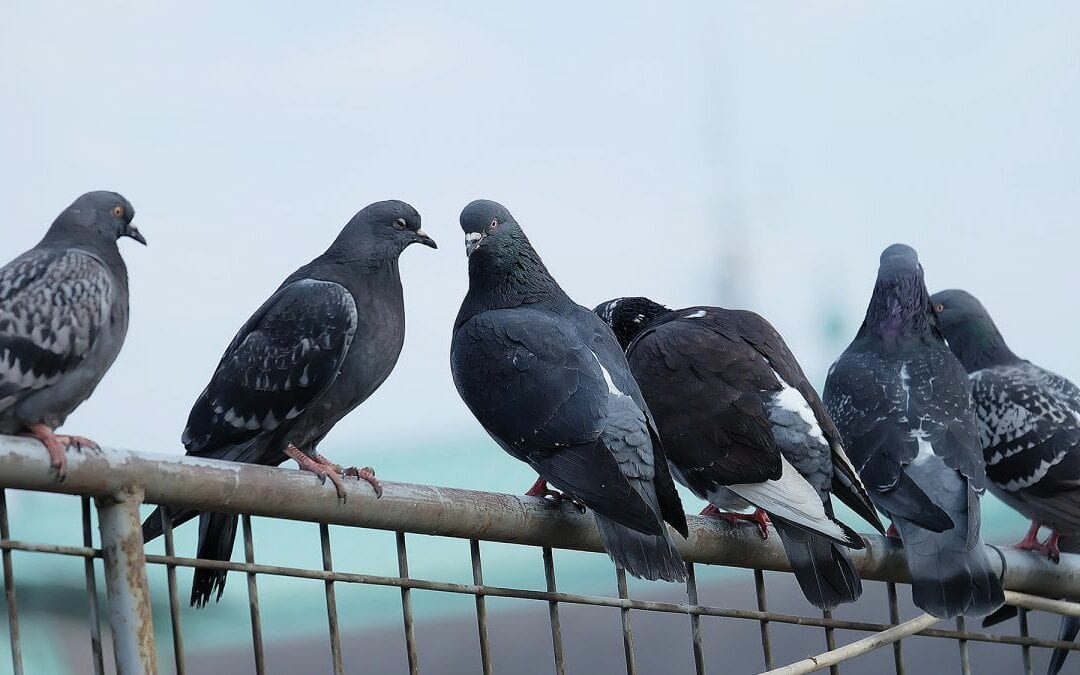
by Pigeon Patrol | May 10, 2021 | Bird Law, Columbidae, history of pigeons, MBCA, pet bird
In any pigeon race there will be a number of competitors which lose their way and are unable to find their way back home and these are refered to as strays. There can be a number of reasons for this occuring with the most common being injury, fatigue, and adverse weather conditions. Sometimes strong winds can blow a race bird off its normal flight path and add considerably to the time and distance needed to make the trip home. This can lead to fatigue and with pigeon races in Australia generally being between 100 and 1000 kilometres it is understandable that they sometimes need to stop for a rest. Unfortunately a tired racing pigeon makes easy prey for many animals, those stopping in a backyard can encounter pet cats and dogs while those stopping in rural areas can encounter foxes. Birds of prey are the major cause of injury to racing pigeons, although collisions with unseen power lines can also cause serious injuries.
So what should you do if you find a lost race bird?
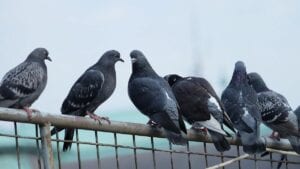
1/ Firstly give it a drink of water.
2/ Something to eat. Racing pigeons (unlike feral pigeons) only eat grain. A bird seed mixture of any type available from supermarkets will be quite suitable. Racing Pigeons generally will not eat bread or other scraps.
3/ Check the pigeon for injuries. Often physical injuries will be quite obvious but be sure to check under the wings as these can often hide serious wounds.
4/ Rest. After food, water, and a couple of days rest, a racing pigeon can be released and will in many cases have recovered sufficiently to complete its journey home.
5/ My pigeon keeps coming back, what should I do? Even after rest and food, there can be internal injuries that can prevent a bird from continuing its way home. If this happens check the birds legs. If it is a racing pigeon it will have at least one band or ring on its leg. One of these rings will be hard and plastic coated and will carry information which will allow you to find the birds owner. Quite often the ring will have the name of the town the pigeon has originated from and the phone number of someone in that area for you to contact. Before phoning the contact number on the ring make sure you make a note of the other information on the ring. This other information will include a series of letters, a year, and a number for example VHA 2010 1234. In this case the VHA would stand for Victorian Homing Association, 2010 is the year the pigeon was born, and 1234 is the pigeons identification number.
6/ If your ring does not have a phone number on it then check this list of contacts for someone in your area
http://www.anpa.com.au/found-a-lost-pigeon/
7/ If your pigeon does not have a ring on its leg then it is not a racing pigeon. It may be someones pet or a feral pigeon.
Pigeon Patrol Products & Services is the leading manufacturer and distributor of bird deterrent (control) products in Canada. Pigeon Patrol products have solved pest bird problems in industrial, commercial, and residential settings since 2000, by using safe and humane bird deterrents with only bird and animal friendly solutions. At Pigeon Patrol, we manufacture and offer a variety of bird deterrents, ranging from Ultra-flex Bird Spikes with UV protection, Bird Netting, 4-S Bird Gel and the best Ultrasonic and audible sound devices on the market today.
Voted Best Canadian wholesaler for Bird Deterrent products ten years in a row.
Contact us at 1- 877– 4– NO-BIRD, (604) 585-9279 or visit our website at www.pigeonpatrol.ca
Pigeon/Pigeon Patrol / Pigeons Roosting / Vancouver Pigeon Control /Bird Spikes / Bird Control / Bird Deterrent / Pigeon Deterrent? Surrey Pigeon Control / Pest /Seagull deterrent / Vancouver Pigeon Blog / Birds Inside Home / Pigeons in the cities / Ice Pigeons/ What to do about pigeons/ sparrows , Damage by Sparrows, How To Keep Raccoons Away, Why Are Raccoons Considered Pests/ De-fence / Pigeon Nesting/ Bird Droppings / Pigeon Dropping/ woodpecker control/ Professional Bird Control Company/ Keep The Birds Away/ Birds/rats/ seagull/pigeon/woodpecker/ dove/sparrow/pidgeon control/pidgeon problem/ pidgeon control/flying rats/ pigeon Problems/ bird netting/bird gel/bird spray/bird nails/ bird guard
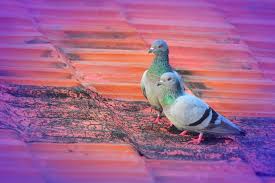
by Pigeon Patrol | May 10, 2021 | history of pigeons, pet bird, Pigeon Predators, Pigeons
What Is Squab?
squab are young pigeons that have never flown. For thousands of years, they have been a favorite meal for every stratum of society throughout the world. They were unequivocally the first domesticated poultry, even preceding chicken.
This may surprise twenty-first-century Americans. More often we think of pigeons as annoying denizens of city monuments and buildings. In fact, these are rock doves, a relative of pigeons, and far less edible. Yet squab is considered a most exquisite ingredient in cuisines as distinct as Cantonese, Moroccan, and French. The simple reason for squab’s universal appeal is the delicate, succulent flesh, truly unlike that of any other bird. Squab is a dark-meat bird, like duck and goose, yet the meat is not nearly as fibrous, rendering it far more tender. Its flavor, when properly cooked, is a lush, rich essence, reminiscent of sautéed foie gras, albeit with more texture.
History of Eating Squab
Historically, squab was a reliable and inexpensive source of animal protein. Documents detailing aristocratic banquets frequently show squab used in one or several important courses. B’stilla, a splendid Moroccan phyllo-crusted pie that is sweet, salty, crispy, and juicy at the same time, is traditionally made with squab. It dates from around the 15th century when the Moors were kicked out of Andalusia and migrated to North Africa. Huge molded timbales of pasta, and molded domes of rice made with squab and rich accompaniments, were fashionable 16th and 17th-century Italian culinary showpieces.
Early on, wide circular structures with tapered tops, or dovecotes, were built in fields to attract wild pigeons to roost. Numerous cubbyholes lined the interior, accommodating several breeding pairs. Adult birds forage independently and, being monogamous, return every evening to the same roost throughout their adult life. Other than constructing the residence facility, the squab farmer was required to do little or no maintenance except to harvest the young squab. Using a ladder, one simply plucked them from the nest.
Farming Squab
In the United States, squab are raised primarily in central California and South Carolina. The birds weigh about 1 pound each. Large covered pens are used for up to a dozen breeding pairs. They are capable of producing up to 24 offspring a year. Parents share in all activities required to raise the squab. They build their nest together, incubate the eggs, and feed the young. The male participates willingly as long as the female accommodates him sexually on demand. When she refuses, he pecks her in the middle of the head. As a result, farmers can separate the sexes far more easily than might otherwise be the case.
They just look for the bald birds, which are females.
Sorting young squab from mature pigeons is also an easy activity. The farmer gathers his squab in a crate. When the crate is opened and shaken vigorously, any birds that fly away are not squab but adult pigeons.
No one farms squab to make a fortune. The birds’ notorious sensitivity prevents using modern poultry techniques, like those employed in the factory farming of chickens, to produce enormous flocks at minimal costs. They respond poorly to artificial insemination and inferior-quality feeds laced with animal by-products.
Farm-raised pigeons must have the same food year-round. Their nesting cubbies must never be disturbed. For this reason, the cost of squab, which has remained constant for decades, is expensive relative to mass-marketed chickens. It’s a whole lot of bother to raise good squab. But these succulent birds make a feast fit for a king.
Pigeon Patrol Products & Services is the leading manufacturer and distributor of bird deterrent (control) products in Canada. Pigeon Patrol products have solved pest bird problems in industrial, commercial, and residential settings since 2000, by using safe and humane bird deterrents with only bird and animal friendly solutions. At Pigeon Patrol, we manufacture and offer a variety of bird deterrents, ranging from Ultra-flex Bird Spikes with UV protection, Bird Netting, 4-S Bird Gel and the best Ultrasonic and audible sound devices on the market today.
Voted Best Canadian wholesaler for Bird Deterrent products ten years in a row.
Contact us at 1- 877– 4– NO-BIRD, (604) 585-9279 or visit our website at www.pigeonpatrol.ca
Pigeon/Pigeon Patrol / Pigeons Roosting / Vancouver Pigeon Control /Bird Spikes / Bird Control / Bird Deterrent / Pigeon Deterrent? Surrey Pigeon Control / Pest /Seagull deterrent / Vancouver Pigeon Blog / Birds Inside Home / Pigeons in the cities / Ice Pigeons/ What to do about pigeons/ sparrows , Damage by Sparrows, How To Keep Raccoons Away, Why Are Raccoons Considered Pests/ De-fence / Pigeon Nesting/ Bird Droppings / Pigeon Dropping/ woodpecker control/ Professional Bird Control Company/ Keep The Birds Away/ Birds/rats/ seagull/pigeon/woodpecker/ dove/sparrow/pidgeon control/pidgeon problem/ pidgeon control/flying rats/ pigeon Problems/ bird netting/bird gel/bird spray/bird nails/ bird guard

by Pigeon Patrol | May 3, 2021 | Bird Deterrent Products, Bird Law, pet bird, Pigeon Droppings, Pigeon Spikes, Pigeons
Many types of birds are attracted to swimming pools. As a result, swimmers might come in contact with bird droppings (poop) while in the pool. If you find bird droppings in the pool, there are a few simple steps you can take to disinfect the water and keep birds away from the pool.
Can bird droppings in the pool spread germs to swimmers?
Many germs that might be found in bird droppings can infect humans. Duck and goose droppings, in particular, might contain germs such as E. coli, Salmonella, Campylobacter, or Cryptosporidium (“Crypto” for short).
Most germs in bird droppings are killed by chlorine within minutes in a well-maintained pool.
The germ Crypto, however, has a tough outer shell that allows it to survive for a long time in the environment. Crypto can survive for days even in properly chlorinated pools. Currently, CDC is not aware of any evidence of Crypto being spread directly from birds to humans.
What should I do if I find bird droppings in the pool?
Pool operators and owners should respond to finding bird droppings in the pool the same way they would respond to finding formed human feces (poop) in the pool. The Healthy Swimming Program’s Fecal Incident Response Recommendations Cdc-pdf[PDF – 4 pages] provide step-by-step guidance on how to properly decontaminate the water in these situations.
Follow these steps to remove bird droppings and disinfect the water:
-
Close the pool to swimmers.
-
Put on disposable gloves.
-
Remove the bird droppings using a net or bucket. Do not vacuum the droppings from the pool.
-
Clean off any debris or dirt from the item used to remove the bird droppings.
-
Disinfect the item used to remove the droppings by immersing it in the pool during the 30-minute disinfection time described below.
-
Remove and dispose of gloves.
-
Wash your hands thoroughly with soap and water immediately.
-
Raise the free chlorine concentration to, or maintain it at, 2 parts per million (ppm); maintain the pH level at 7.5 or less; keep the temperature at 77°F (25°C) or higher. The free chlorine and pH should remain at these levels for 30 minutes.
-
Confirm that the filtration system is operating properly.
How can I keep birds away from the pool area?
The following steps can help encourage birds, other than ducks and geese (more information on ducks and geese is provided below), to leave the swimming pool area:
-
Remove plants that produce edible nuts, fruits, and berries.
-
Remove bird feeders.
-
Trim or remove trees and shrubs to limit branches hanging around or over the pool that can be used by roosting birds.
How can I keep ducks and geese away from the pool area?
Do not feed ducks or geese; providing food attracts them and encourages them to return. Many types of ducks and geese eat grass, so reducing the area of grass lawns around the swimming pool or putting up barriers that prohibit movement between swimming pools and grass lawns, such as fences and hedges, might also help. Removing domestic ducks and geese from the pool area can also help decrease the likelihood that wild ducks and geese will be attracted to the area.
The U.S. Department of Agriculture has additional information on how to manage ducks and geese (also known as waterfowl) in their document Assistance with Waterfowl Damage. Cdc-pdf[PDF – 3 pages]External
What can I do to get rid of ducks and geese already in the pool area?
In the United States, most birds, including ducks and geese, are protected by the Federal Migratory Bird Treaty Act and state laws. Local laws might also apply. Therefore, legal options for dealing with birds are limited and may require a permit. Consult the U.S. Fish and Wildlife ServicesExternal and your state wildlife agencyExternal for more information.
Pigeon Patrol Products & Services is the leading manufacturer and distributor of bird deterrent (control) products in Canada. Pigeon Patrol products have solved pest bird problems in industrial, commercial, and residential settings since 2000, by using safe and humane bird deterrents with only bird and animal friendly solutions. At Pigeon Patrol, we manufacture and offer a variety of bird deterrents, ranging from Ultra-flex Bird Spikes with UV protection, Bird Netting, 4-S Bird Gel and the best Ultrasonic and audible sound devices on the market today.
Voted Best Canadian wholesaler for Bird Deterrent products ten years in a row.
Contact us at 1- 877– 4– NO-BIRD, (604) 585-9279 or visit our website at www.pigeonpatrol.ca
Pigeon/Pigeon Patrol / Pigeons Roosting / Vancouver Pigeon Control /Bird Spikes / Bird Control / Bird Deterrent / Pigeon Deterrent? Surrey Pigeon Control / Pest /Seagull deterrent / Vancouver Pigeon Blog / Birds Inside Home / Pigeons in the cities / Ice Pigeons/ What to do about pigeons/ sparrows , Damage by Sparrows, How To Keep Raccoons Away, Why Are Raccoons Considered Pests/ De-fence / Pigeon Nesting/ Bird Droppings / Pigeon Dropping/ woodpecker control/ Professional Bird Control Company/ Keep The Birds Away/ Birds/rats/ seagull/pigeon/woodpecker/ dove/sparrow/pidgeon control/pidgeon problem/ pidgeon control/flying rats/ pigeon Problems/ bird netting/bird gel/bird spray/bird nails/ bird guard
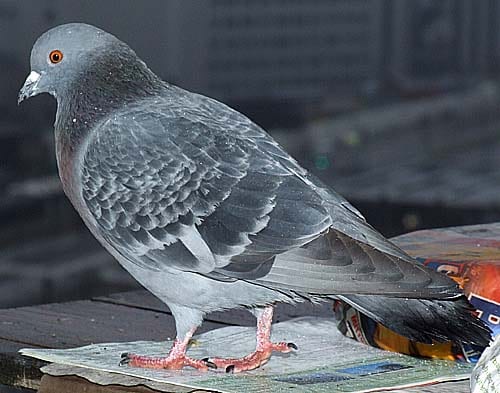
by Pigeon Patrol | May 3, 2021 | Animal Deterrent Products, Bird Deterrent Products, Bird Netting, Bird Spikes, history of pigeons, Pigeon Control, Pigeon Patrol's Services, Pigeon Spikes
Need pigeon removal in your hometown?
Pigeons are a determined bird, doggedly living near humans because of the ample food supply. These birds are indiscriminate eliminators of waste, leaving liquid splatters of dropping anywhere they travel. Their lack of concern for cleanliness extends into their everyday activities, and water contamination has been traced back to pigeon carcasses and feces in water towers near roosting sites. The waste from these birds, which are most commonly seen in urban areas, is very corrosive. Concrete, limestone and metal all suffer from the ill-effects of pigeon droppings. In cities, constant cleanup alone costs thousands of dollars.
Because of the homing ability of pigeons, there are difficulties with relocation. This species of bird was once used as a messenger between civilizations, finding their way over hundreds and thousands of miles. The only way to get rid of pigeons is to discourage them and prevent them from frequenting undesired locations. There are a number of ways to accomplish this, some proven to show more success than others. Information about pigeon trapping – analysis and methods for how to trap.
Unsuccessful methods of pigeon control deal mostly with predator fear. Plastic owls are a favorite of the public when, in reality, the fake predator appears as just that—fake. A pigeon will not be any more leery of an unmoving owl than it would an unmoving human. Pigeons are largely unaffected by unpleasant smells, though it has recently been proven that their homing ability is based on scent mapping and not electromagnetic fields. Sounds are another flop when it comes to pigeon control. Ultrasonic sound emitters may very well produce noises humans can’t hear, but rarely are those sounds ‘annoying’ to birds. If a pigeon can put up with all the noise congestion in a busy city, some random sounds from an ultrasonic radio aren’t going to bother it.
The most practical ways to get rid of pigeons is to convince them that they do not or cannot stay near your home or business. Any ledge can be a roosting site. By installing pigeon nets, bird spikes or electric shockers, pigeons will be less inclined to settle on those surfaces. Nets and spikes prevent roosting all together. Electric strips may be difficult to install at higher locations, but many brands offer solar power and require little maintenance. Electric strips do require more attention than netting and are often more expensive. If your building has smaller sections of roof, bird “spiders” are useful instruments. The wire device resembles a sprinkler in design with thin lines of arced metal extending outward from a central location. These wires are loose and are not strong enough to support the weight of a bird.
Information about how to keep pigeons away – prevention techniques.
There is something to be said for determination, too. Even though most scare tactics do not work on pigeons, harassment techniques can prove beneficial if done frequently and without fail. If pigeons have taken over your yard, letting your dog out will chase them away. Yes, they will come back when the dog is gone, but if this scenario is repeated often enough the pigeons will learn that your yard is not the easiest place to visit. When it comes to opportunistic birds, life is all about easy.
Some towns and cities have experimented with employing the use of falcons to control pigeon populations. The benefit to using birds of prey is that they often keep the pigeons moving, preventing any one roosting area to become long-term. Unfortunately, falcons cannot eliminate a large enough number of the nuisance birds to make a noticeable difference without becoming a nuisance bird themselves.
Pigeons are products of their environment. If they were not deliberately fed in parks and on streets a decline in their nuisance behaviors would be seen. These birds can live on naturally occurring food sources. Unfortunately, it is the poor sanitation habits of people that keep these animals desiring our leftovers. If pigeons have overrun your home, be sure that all garbage and compost is carefully disposed of. You may not be able to control the habits of the neighbors on your block, but you can make your house that much more uninviting by following good hygiene habits.
Pigeon Information & Facts
Pigeon Appearance: Pigeons are robust birds with short necks, usually gray in color with a faint iridescence to their feathers. They have a characteristic back and forth rhythm to their head. This bobbing is a mechanism that allows the birds to focus their vision and perceive depth. Pigeons have duplicate black bands on each wing, but the coloration on the main part of the body can vary. Their feet are suited for perching on ledges and high peaks. The beak of the pigeon is medium in both length and width, ideal for pulling apart bread, picking up small food pieces, or fishing spiders out of cracks.
Pigeon Habitat and Behavior: Pigeons are most often seen in cities. This habitat preference is largely due to the surplus of food available and the high roosting opportunities. Pigeons are fond of the water towers on tall buildings, often building messy nests on the rim. For this reason, most cities require water towers be completely sealed to prevent the birds or their waste from contaminating the water supply. A pigeon will nest almost anywhere and will often do so with many others of its kind. A roost can be made atop any vertical surface. Pigeons are known in invade gutters, ducts, air conditioners, attics, warehouses, and drains. They are not overly concerned with sanitary conditions and will utilize any vertical object in any location for their purposes.
Pigeons are also very food-driven. This problem has been made serious by the continued, deliberate feeding of the birds in urban areas. The birds have little fear of humans and will often converge around people in parks and near restaurants. Pigeon feeding is a common hobby of many city-goers, yet another reason for the lack of caution around humans.
Egg laying can take place as often as every other month. Courtship between the male and the female is brief, and the resulting egg clutch usually only contains two eggs. An abundance of pigeons will result in quick overpopulation, regardless of how many eggs are laid per pair. Some cites have sought population control by replacing viable eggs with fake or unfertilized eggs. This tactic may be effective short-term, but pigeons will lay another clutch once the original appears unproductive.
Pigeon Diet: Pigeons will scavenge for almost any type of grain-based food source. The habit of city restaurants discarding stale bread into parks increases the role this type of food plays in the pigeon diet. In nature, the birds eat insects, berries, seeds, grains, and spiders.
Pigeon Nuisance Concerns: Pigeons are not as bold as some species of birds adapted to living off human leftovers. The major concern when it comes to this species centers on its roosting habits. Pigeons most often roost in number. They are not a sanitary bird, often eliminating waste in their own nests, and living on top of the bodies of their own kind. Pigeon waste is caustic and will do permanent damage to stone and concrete. In many cities, water contamination due to pigeons and their droppings has been a major concern. Because these birds pool around areas with a high opportunity for food (such as restaurants), there is a logical concern for public health.
Pigeon Diseases: The most common zoonotic disease associated with pigeons is called histoplasmosis. This disease is caused by a fungal infection facilitated by the dried powder of pigeon feces. People with compromised immune systems should also be wary of cryptococcosis, another fungal infection affecting only those without healthy defenses. Psittacosis, more commonly transmitted by exotic birds, has been reported in larger cities. These illnesses present with flu-like symptoms, making diagnosis and treatment difficult unless the disease is well underway.
This site is intended to provide pigeon education and information, so that you can make an informed decision if you need to deal with a pigeon problem. This site provides many pigeon control articles and strategies, if you wish to attempt to solve the problem yourself. If you are unable to do so, which is likely with many cases of pigeon removal, please go to the home page and click the USA map, where I have wildlife removal experts listed in over 500 cites and towns, who can properly help you with your nuisance pigeon.
Pigeon Patrol Products & Services is the leading manufacturer and distributor of bird deterrent (control) products in Canada. Pigeon Patrol products have solved pest bird problems in industrial, commercial, and residential settings since 2000, by using safe and humane bird deterrents with only bird and animal friendly solutions. At Pigeon Patrol, we manufacture and offer a variety of bird deterrents, ranging from Ultra-flex Bird Spikes with UV protection, Bird Netting, 4-S Bird Gel and the best Ultrasonic and audible sound devices on the market today.
Voted Best Canadian wholesaler for Bird Deterrent products ten years in a row.
Contact us at 1- 877– 4– NO-BIRD, (604) 585-9279 or visit our website at www.pigeonpatrol.ca
Pigeon/Pigeon Patrol / Pigeons Roosting / Vancouver Pigeon Control /Bird Spikes / Bird Control / Bird Deterrent / Pigeon Deterrent? Surrey Pigeon Control / Pest /Seagull deterrent / Vancouver Pigeon Blog / Birds Inside Home / Pigeons in the cities / Ice Pigeons/ What to do about pigeons/ sparrows , Damage by Sparrows, How To Keep Raccoons Away, Why Are Raccoons Considered Pests/ De-fence / Pigeon Nesting/ Bird Droppings / Pigeon Dropping/ woodpecker control/ Professional Bird Control Company/ Keep The Birds Away/ Birds/rats/ seagull/pigeon/woodpecker/ dove/sparrow/pidgeon control/pidgeon problem/ pidgeon control/flying rats/ pigeon Problems/ bird netting/bird gel/bird spray/bird nails/ bird guard
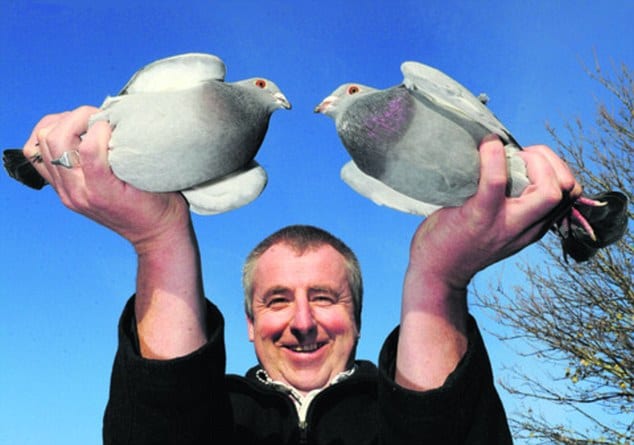
by Pigeon Patrol | May 3, 2021 | history of pigeons, Pigeon Control, Pigeon Droppings, Pigeon Patrol's Services, Pigeons
There it was, that darned noise again.
Nobody could possibly be happy cleaning pigeon droppings. Yet Arno Penzias and Robert Wilson were being forced to do it. As good scientists they simply could not avoid it, since they had to discount the role of this “white dielectric substance” in the noise that was plaguing their equipment. When they finished with the cleaning and dispatched the pigeons by mail to a faraway place, the noise still did not disappear. And it seemed to come from all directions. The implications of this annoying constant background hum, corresponding to a temperature of only 3 degrees above absolute zero, signified one of the most momentous discoveries in twentieth-century physics, notable even among Nobel Prize-winning discoveries.
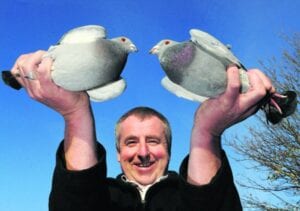
Arno Penzias, the German-born physicist who fled from the Nazis with his family in 1939, is at Lindau this year along with his co-recipient Robert Wilson. There are two other physics Nobel laureates this year at Lindau- George Smoot and John Mather. The four men whose work is separated by forty years share a very close connection. Smoot and Mather’s work put the capstone on that of Penzias and Wilson’s. In a way the work of these gentlemen eclipses the work of all Nobel laureates since it deals with something that happened long before any of the others made their discoveries. In fact, it was so long before that it dealt with the beginning of time itself…or so we think. Penzias and Wilson discovered what is called the”cosmic microwave background radiation”, which is nothing less than the notes from the harp that the universe played when it fired up. Just like you can guess the identity of the great conductor Herbert von Karajan from listening to the thundering notes of his performance of Beethoven’s 9th symphony, so can you discern the violent birth throes of the universe from the noise this cosmic cataclysm left behind.
It was noise, quite literally. And it was bothering Penzias and Wilson when they were working on a radio antenna inthe fall of 1964 in a small town called Holmdel in New Jersey. There, Bell Laboratories which owned the instrument had turned it over to Penzias and Wilson for pure science. That was a different age, when companies like BellLabs gave free rein to researchers to pursue their own ideas; in the ensuing decades the institution would produce a steady stream of Nobel laureates,an astonishing feat for an industrial laboratory. But at that point the lab was just getting warmed up.
The antenna was about twenty feet wide and shaped like a horn to minimize reception from the sides. It was originally designed to detect transmitted signals from Echo, the first communications satellite. But now Penzias and Wilson were using it to detect radio waves from celestial bodies. The receiver was tuned to detect only frequencies in the microwave region of the spectrum.
But there it was, that darned noise again. No matter what they did to the antenna, it was steadily humming in the background, like one of those overenthusiastic teenagers deliberately trying to annoy you. Like good scientists, Penzias and Wilson started to eliminate all possible sources of noise they could find. Radio noise could arise from any number of sources. It could come from the ground which was warmed up by the sun. It could arise from the earth’s atmosphere, or from the gas between the stars, or from the emission of molecules in outer space. Noise could be generated by waves bouncing off some of the sharp edges in their antenna. Oneby one the scientists investigated and discounted all these sources. They covered up the sharp edges with aluminum tape. They turned the antenna towards and away from major cities like New York. And of course, finally in desperation, they cleaned up waste from a family of pigeons that was roosting in a small part of the antenna horn. They dispatched these pigeons to the main offices of Bell Labs (like good homing pigeons the birds promptly showed up two days later). The noise still would not disappear. Like constant mumbling from disgruntled voters at a campaign speech, it simply would not die.
The two men were accomplished scientists and they did not doubt their own skills. Penzias had worked with Isidor Rabi (whom we met earlier) and Charles Townes, the inventor of the maser, at Columbia University. Wilson had gotten his PhD. at Caltech a few years ago. Their temperaments also complemented each other. Penzias was a big picture man, trying to tie together facts in an overarching thread. Wilson was much more detail-oriented and could patiently tinker with equipment until he got it right. Together the scientists were confident in their analysis and believed they had discarded all sources of noise. Yet it remained. For the moment they decided to take a break.
It was December of that year, and Penzias was coming back on an airplane from a conference. The “noise problem” was on his mind and he mentioned it to a fellow astronomer named Bernie Burke. A short time later, Burke called Penzias back with some interesting news. He had just seen a manuscript written by a physicist named Jim Peebles at Princeton University along with his supervisor Robert Dicke. The manuscript predicted that because of the intense heat during the birth of the universe, there should exist today a remnant of the Big Bang, which would manifest itself uniformly as steady background radiation. Because of the time elapsed since the Big Bang, the temperature of this radiation should be no more than afew degrees kelvin above absolute zero.
Oh yes, and it should be detectable as constant hiss in a good radio telescope.
I leave it to the students at this year’s Lindau meeting to personally ask Penzias what he must have felt when he heard about the Peebles-Dicke paper from Burke. But it surely must have sent his heart racing. Intrigued, Penzias called Dicke. Dicke’s heart must have raced even more because just then he had been trying to construct his own antenna to detect the cosmic noise that his paper predicted. Dicke promptly got into his car and drove the thirty miles or so from Princeton to check out Penzias and Wilson’s data. When he confirmed its authenticity, he must have felt an intense mix of excitement, amazement and chagrin. He had narrowly missed making the discovery that won Penzias and Wilson the Nobel Prize for physics in 1978.
Penzias and Wilson in front of the Holmdel radio antenna
Sounds from a faraway time
The evolution of the idea of the cosmic microwave background is almost a textbook study of ignorance and triumph, and how experimentalists and theoreticians can sometimes unintentionally delay progress by failing to communicate with one another. The Big Bang theory was proposed by Georges Lemaître, a Belgian Roman Catholic priest, although interestingly the term ‘Big Bang’ was pejoratively coined by a detractor of the theory, Fred Hoyle. Later the theory was developed by the brilliant and colorful Russian physicist, scotch lover and popular science writer George Gamow and his colleagues, Ralph Alpher and Robert Herman. After World War 2, Gamow’s colleagues Alpher and Herman predicted the cosmic microwave background. This was based on their ideas about nucleosynthesis- the formation of elements in the universe.
Robert Herman (left) and Ralph Alpher. In the middle is George Gamow, materializing out of a bottle of ‘Ylem’, the primordial soup from which our universe originated.
Big Bang Theory cosmology is based on Einstein’s theory of gravitation. In 1929 Edwin Hubble had already made the groundbreaking discovery that the universe seemed to be expanding. This meant that at some point back in time it must have been infinitely compressed. Compression means high temperature, in this case, a very high temperature of 10 billion degrees when the universe was only one second old. At this temperature matter as we know it ceases to exist, and the universe consists of a thick boiling broth of subatomic particles and electromagnetic radiation in the form of very high frequency gamma rays. Electromagnetic radiation is emitted and absorbed by all electrically charged particles. When there are a sufficient number of particles, this radiation manifests itself as black-body radiation. Black-body radiation can be defined by a certain value of energy at a given frequency range and thus can be completely fixed by the temperature. At ten billion degrees, there would be massive creation of electrons and positrons from the energy of other moving particles. But after one second, Big Bang theory physics predicts that if the number of photons is larger than the number of matter particles, then the initial black-body radiation will continue to be black-body radiation. The only change in this radiation is that it cools with the expansion of the universe. About 400,000 years after the beginning, an epochal event happened. Stable atoms of hydrogen began to form, and the radiation was ‘decoupled’ from the matter and was left free to wander on its own. Thus, even today, almost fifteen billion years later, space should be filled with black-body radiation left over from the Big Bang. Its temperature should be roughly 3 K.
This at least was what Alpher and Gamow conjectured. But they were not the first ones to think about it. In fact the microwave background had been indirectly observed in the late 1930s and early 40s by American astronomers. These astronomers saw faint signs of light absorption by certain molecules in outer space and concluded that the molecules were somehow being ‘pumped up’ with energy that came from a temperature of 2.3 K. Unfortunately, there was yet no theoretical framework in which this observation could fit, and it became part of the countless number of other details in astronomy. Now, when Gamow, Alpher and Herman formed their ideas, they did not know about this experimental work. Most incredibly, a couple of years later, two Russian physicists published a paper saying that not only should this background exist, but that the best detecting instrument for it would be the radio antenna in Holmdel, New Jersey! As if to cap this circus of ignorance and lack of communication, Penzias, Wilson and Dicke had all not heard of these earlier predictions; somehow unlike the cosmic background, the signal had been lost in the noise. One can only wonder how things would be if this drama were to be enacted today, in the era of the Internet and Email.
Dicke in fact thought he was the first one proposing the cosmic microwave background. His reasoning was fascinating and harkened back to analogies in Hindu and Buddhist philosophies about the creation of the universe. Dicke was a proponent of the ‘oscillating universe’ which posits that the universe has no end or beginning but cycles through time. According to his logic, if the heavy elements had been created through nucleosynthesis, they could not keep on increasing in proportion indefinitely; after all, the observed universe is largely contained of hydrogen and helium and not heavy elements. Thus, at some point the heavy elements would have to be annihilated to make room for the next batch of matter. This annihilation would produce radiation, and it’s this radiation that would manifest itself as the cosmic background. Dicke’s oscillating universe tome is a perfect example of a scientific ‘model’, a conceptual construction that retains some simple aspects of the universe but which can neatly explain a key observation. As with models, Dicke’s prediction of the microwave background does not uniquely depend on the oscillating universe model. In fact it arises perfectly from the modern day theory of the Big Bang.
Dicke was supremely competent for this kind of theorizing. Today he is the underappreciated man in the cosmic microwave background story. Dicke was a genius at electronic devices, working on important radar components at the famous Radiation Laboratory at MIT during the war. In the early 60s, he did a highly accurate measurement proving the equivalence of inertial mass and gravitational mass, a foundational concept of Einstein’s relativity. Dicke’s thirst was not slaked just by doing experiments. He also provided the first quantum theory of the laser. By the mid 60s Dicke was a legend, the Enrico Fermi of his time, highly accomplished in both theory and experiment. As it turned out though, even Dicke could not escape the vagaries of space and time. Robert Henry Dicke died in 1997.
Robert Henry Dicke (1916-1997)
In 1989, a satellite called COBE was launched by NASA that would measure Penzias and Wilson’s microwave background to unprecedented accuracy. Two of the principal scientists in this endeavor were George Smoot and John Mather who are at Lindau this year. The satellite’s measurements of the black body radiation curve were so remarkably accurate that the error bars in the curve which typically extend on top and bottom were almost lost in the signal.
The COBE satellite black-body radiation curve with the data points (red) plotted on the theoretical spectrum (black). The two match up almost perfectly
The COBE satellite followed by the Wilkinson Probe satellite launched in 2001 put the icing on the microwave background cake. The Big Bang theory has attained the status of one of our most highly refined and validated theories, thanks to the work of Smoot, Penzias, Wilson, Mather and many others. It seems only wonderfully fitting that Penzias, Wilson, Smoot and Mather are all attending this year’s meeting, coming full circle and neatly tying together the ends of a story spread over 40 years, which in turn tells the story of moments in time billions of years ago.
George Smoot and John Mather (Physics, 2006)
The story of the microwave background is an exercise in scientific history, demonstrating how ideas can, and sometimes do not, build on top of each other. It would have been interesting to see how the same story would have played out in today’s age, when the barriers to communication have been all but shattered by the availability of hundreds of years of research that can be accessed through the click of a mouse. Scientific ideas are hostage to the same qualities of human fallibility, determination, creativity, and of course, the uncertainties of space and time, as are other aspects of the human experiment. All we can do is persevere.
Pigeon Patrol Products & Services is the leading manufacturer and distributor of bird deterrent (control) products in Canada. Pigeon Patrol products have solved pest bird problems in industrial, commercial, and residential settings since 2000, by using safe and humane bird deterrents with only bird and animal friendly solutions. At Pigeon Patrol, we manufacture and offer a variety of bird deterrents, ranging from Ultra-flex Bird Spikes with UV protection, Bird Netting, 4-S Bird Gel and the best Ultrasonic and audible sound devices on the market today.
Voted Best Canadian wholesaler for Bird Deterrent products ten years in a row.
Contact us at 1- 877– 4– NO-BIRD, (604) 585-9279 or visit our website at www.pigeonpatrol.ca
Pigeon/Pigeon Patrol / Pigeons Roosting / Vancouver Pigeon Control /Bird Spikes / Bird Control / Bird Deterrent / Pigeon Deterrent? Surrey Pigeon Control / Pest /Seagull deterrent / Vancouver Pigeon Blog / Birds Inside Home / Pigeons in the cities / Ice Pigeons/ What to do about pigeons/ sparrows , Damage by Sparrows, How To Keep Raccoons Away, Why Are Raccoons Considered Pests/ De-fence / Pigeon Nesting/ Bird Droppings / Pigeon Dropping/ woodpecker control/ Professional Bird Control Company/ Keep The Birds Away/ Birds/rats/ seagull/pigeon/woodpecker/ dove/sparrow/pidgeon control/pidgeon problem/ pidgeon control/flying rats/ pigeon Problems/ bird netting/bird gel/bird spray/bird nails/ bird guard
 The pigeons, of course, did their bit to make their presence felt in the realm of cricket: they have blessed statues of cricketers in characteristic fashion; they have flocked to grounds in large numbers; and have even featured in luncheon menus.
The pigeons, of course, did their bit to make their presence felt in the realm of cricket: they have blessed statues of cricketers in characteristic fashion; they have flocked to grounds in large numbers; and have even featured in luncheon menus.